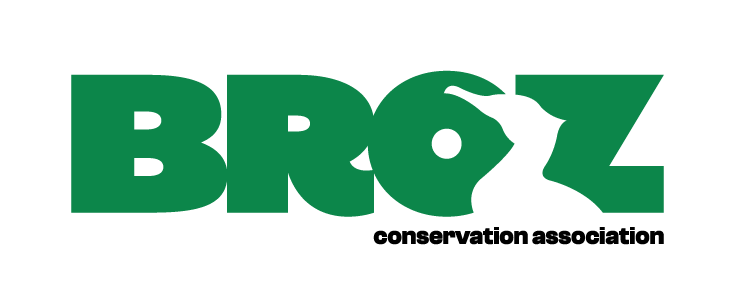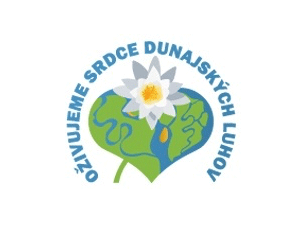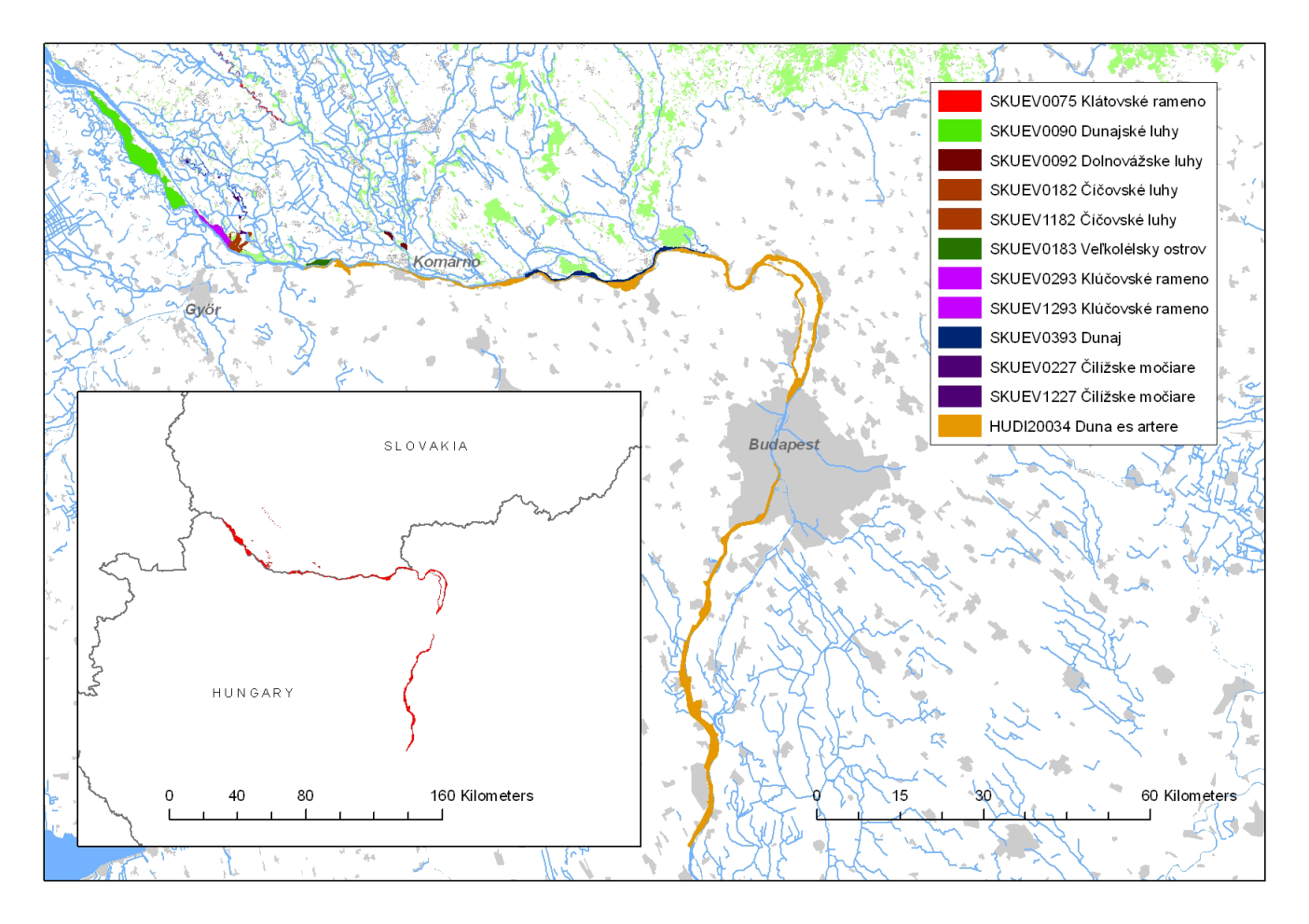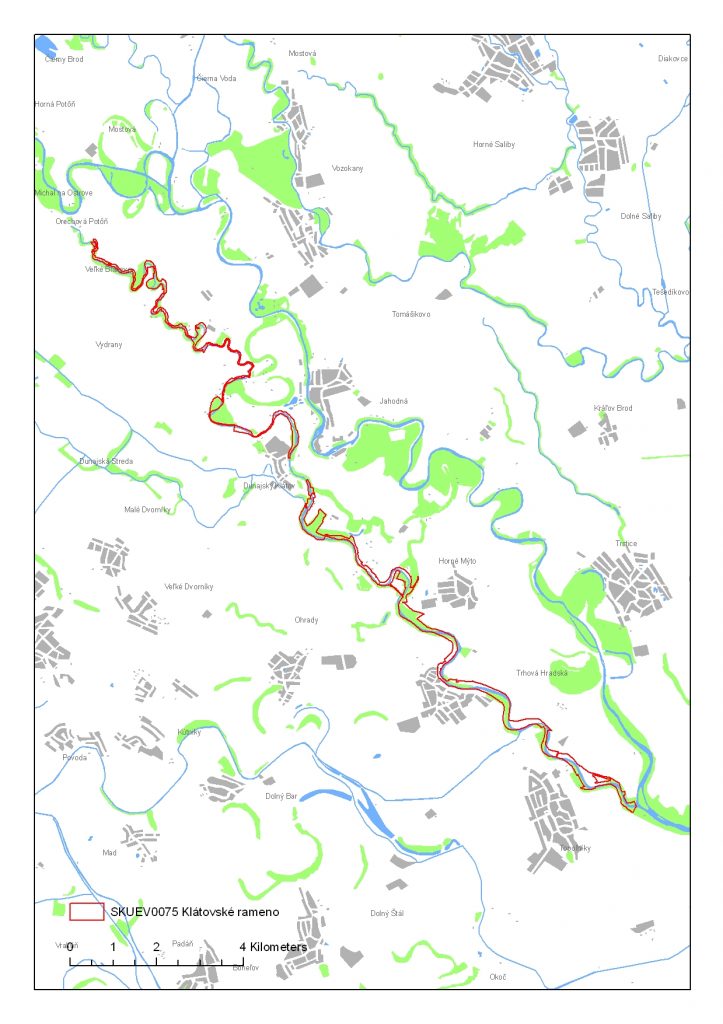We aim for complex nature conservation
The project is related to the large area of the river Danube branch system in Slovakia in localities Dobrohošť – Sap, Klúčovské and Číčovské branches, Čiližsky creek and to wetlands, in the river alluvium Váh, Ipeľ and the Danube. In Hungary, the project is related to the National Park Danube – Ipeľ area
The common aims of all the measures that will be implemented in the project are: to ensure sufficient amount of water for these increasingly drying areas and ensure a suitable water regime for the native plant and animal species.
Such a large project has not been implemented in Slovakia yet, and it will serve as a model for other similar projects in the future.
Hidden camera by the nest of the White-tailed eagle
Hidden nest camera has recorded a couple of White-tailed eagles
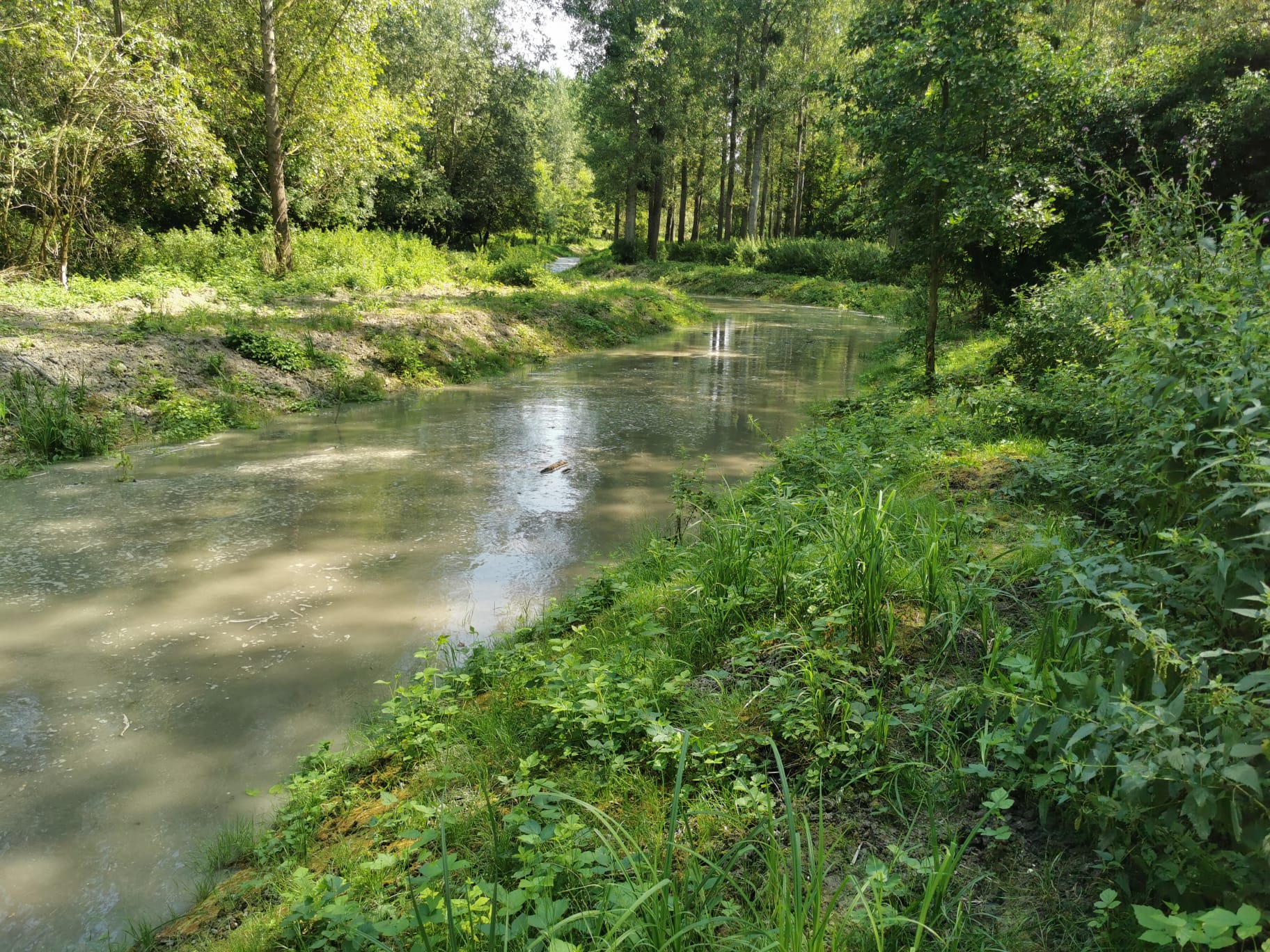
The water has partially returned to the side arm of Kráľovská lúka
On July 15, 2024, at Kráľovská lúka, we started the test filling of the renewed side arm in the section from the inlet of the Baka branch system to the first culvert.

Restoration of the flow of the side arm in Kráľovská lúka continues
The works in the middle part of the arm, with aim of connecting the two side branches to the stream, is already finished, the water has flowed in here and is full of life - fish, frogs, snails, dragonflies...
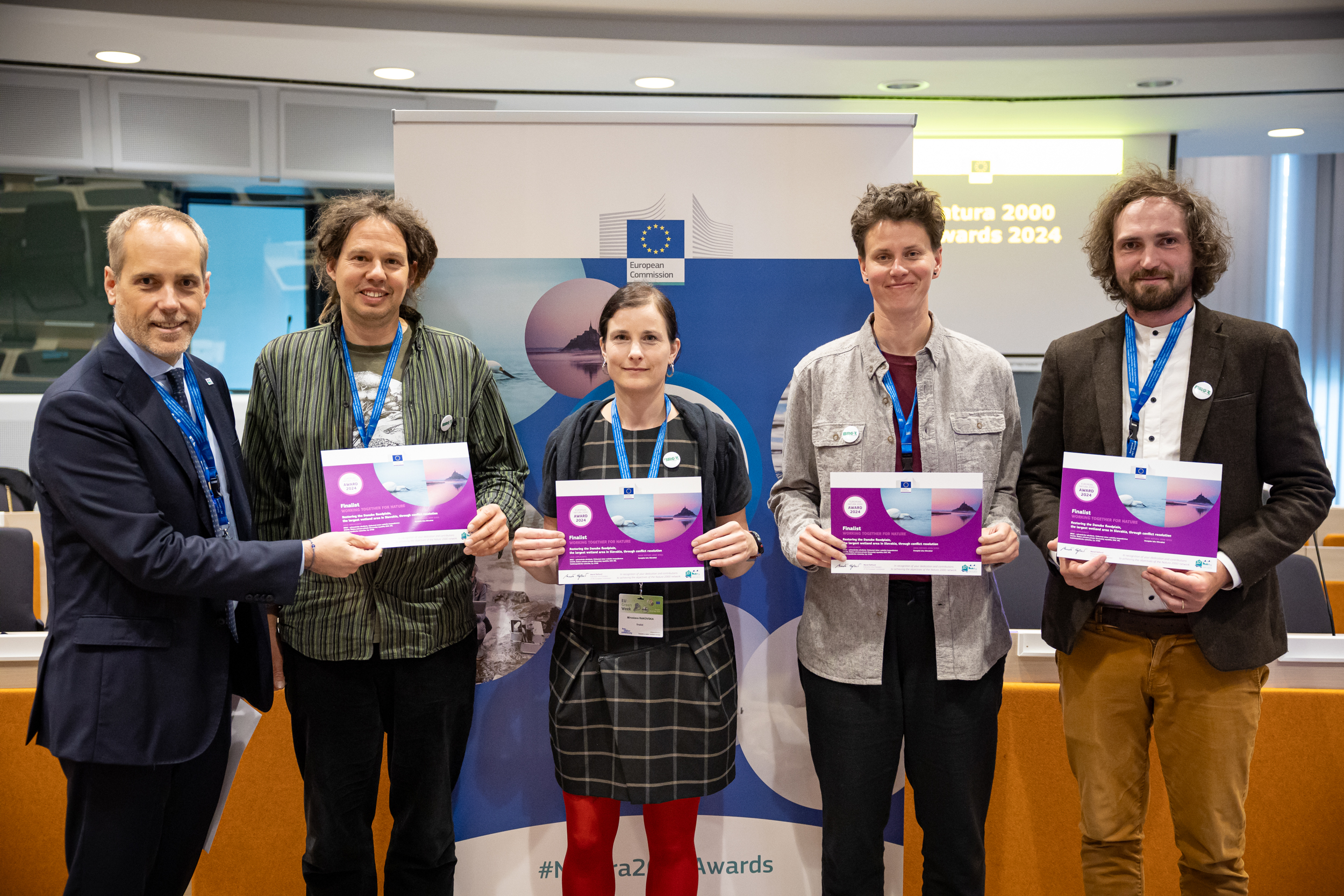
We are finalists of the Natura 2000 Award
We went to Brussels as finalists and we are going home as finalists. Although we did not win the Natura 2000 award, it was an honor for us to participate in this prestigious European competition and to be among the 6 nominated projects in our category. He won an Irish project where conservationists helped to change the setting of subsidies for farmers, so that they could manage Natura 2000 areas closer to nature and not be deprived.
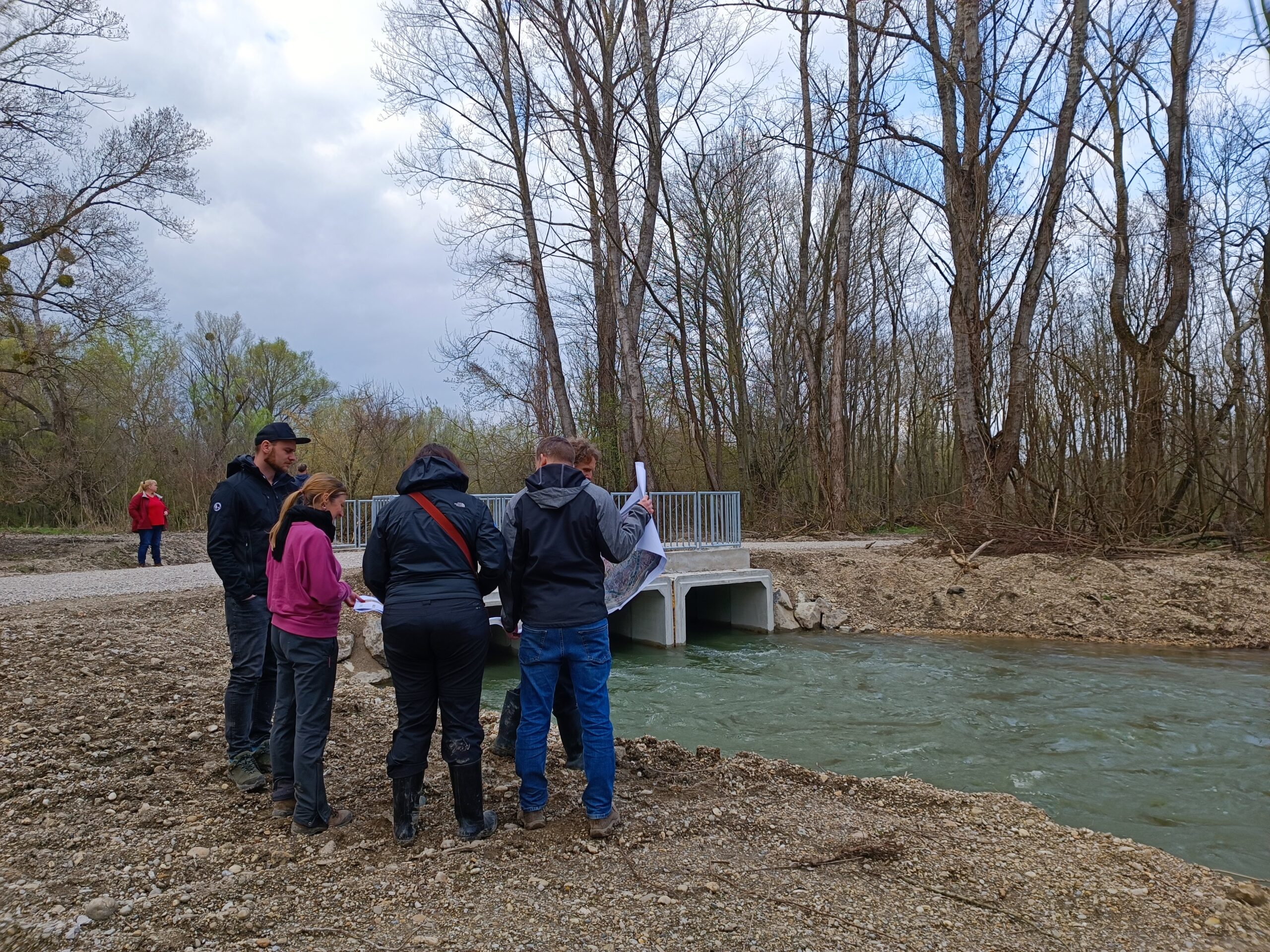
A visit from the European Commission praised the LIFE Dunajské luhy project
During 12.-13.-3. the visit of the project monitor and the representative of the European Commission took place for the purpose of checking the LIFE Danube Floodplains project.
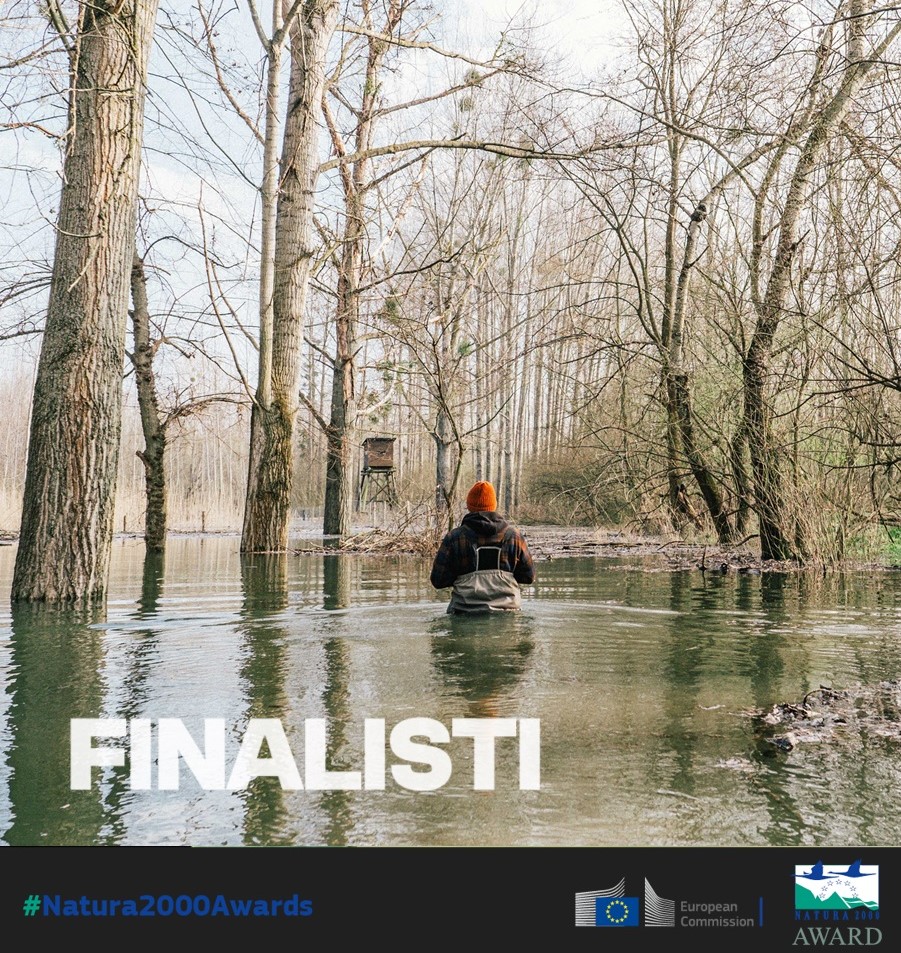
We are nominated among the 27 finalists in the NATURA 2000 Award 2024!
We are proud to announce that we have been nominated among the 27 finalists in the European competition NATURA 2000 Award 2024!

Water flows again through the Vojčianske side arm
In the past, the Vojčianske side arm was part of the so-called of the inland Danube delta - a system of free-flowing river branches. After the construction of the Gabčíkovo Water Works, most of the water was diverted to the hydroelectric power plant through the supply channel, which resulted in cutting off the entire branch system from the Danube.

Why is the simulated flood necessary this early in the spring?
The current spring simulated flood of the inland Delta is occurring very early this year, with high flows set at its onset. For which species is this beneficial?
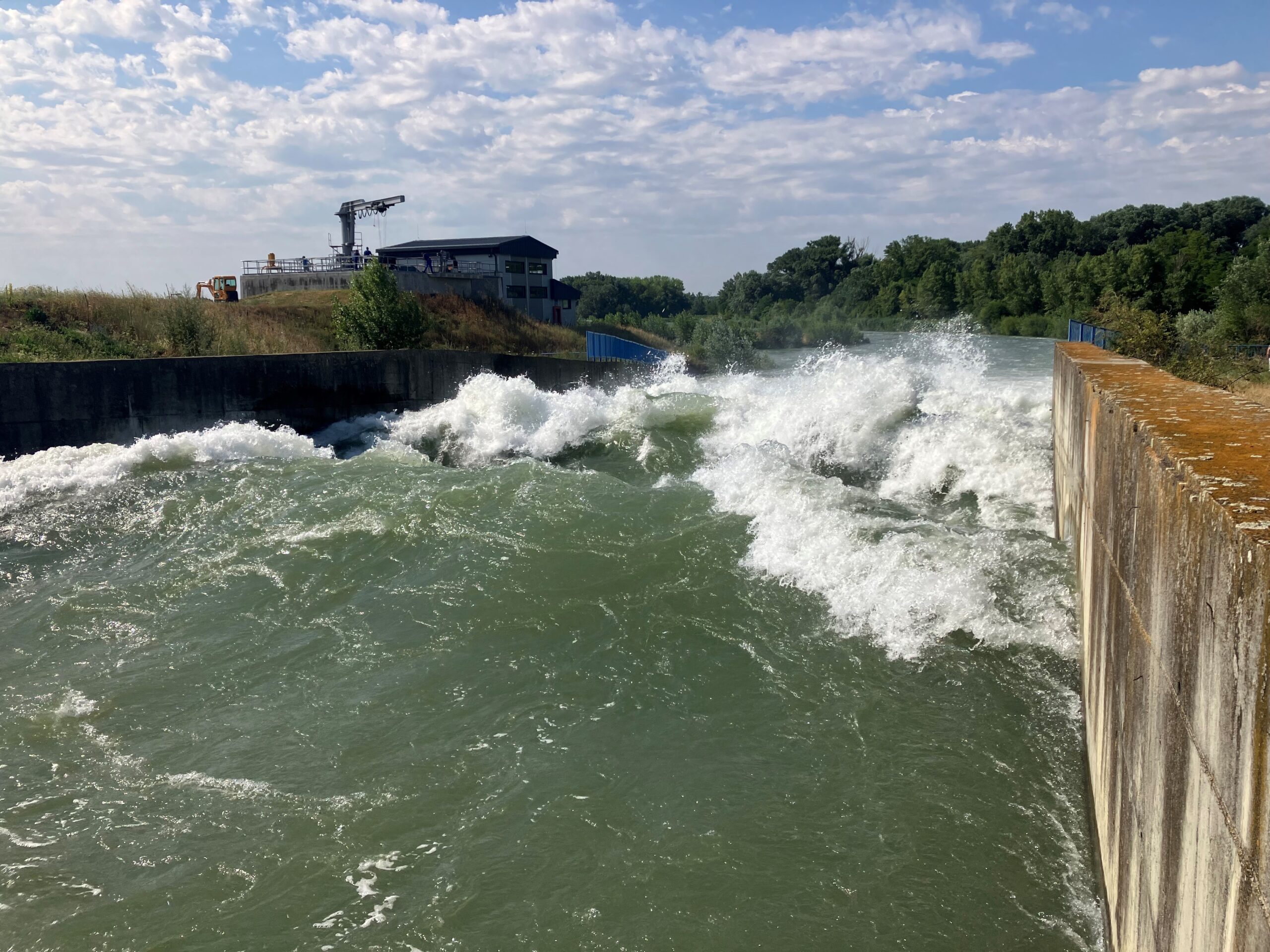
Flooding of the inland Danube delta has begun
On Saturday 2.3. the flow rates through the Dobrohošť inlet facility begun to raise. Here the water flows into the left branch system of the Danube, the so-called inland delta with the aim of connecting this rare system of river branches and wetlands to the Danube water.
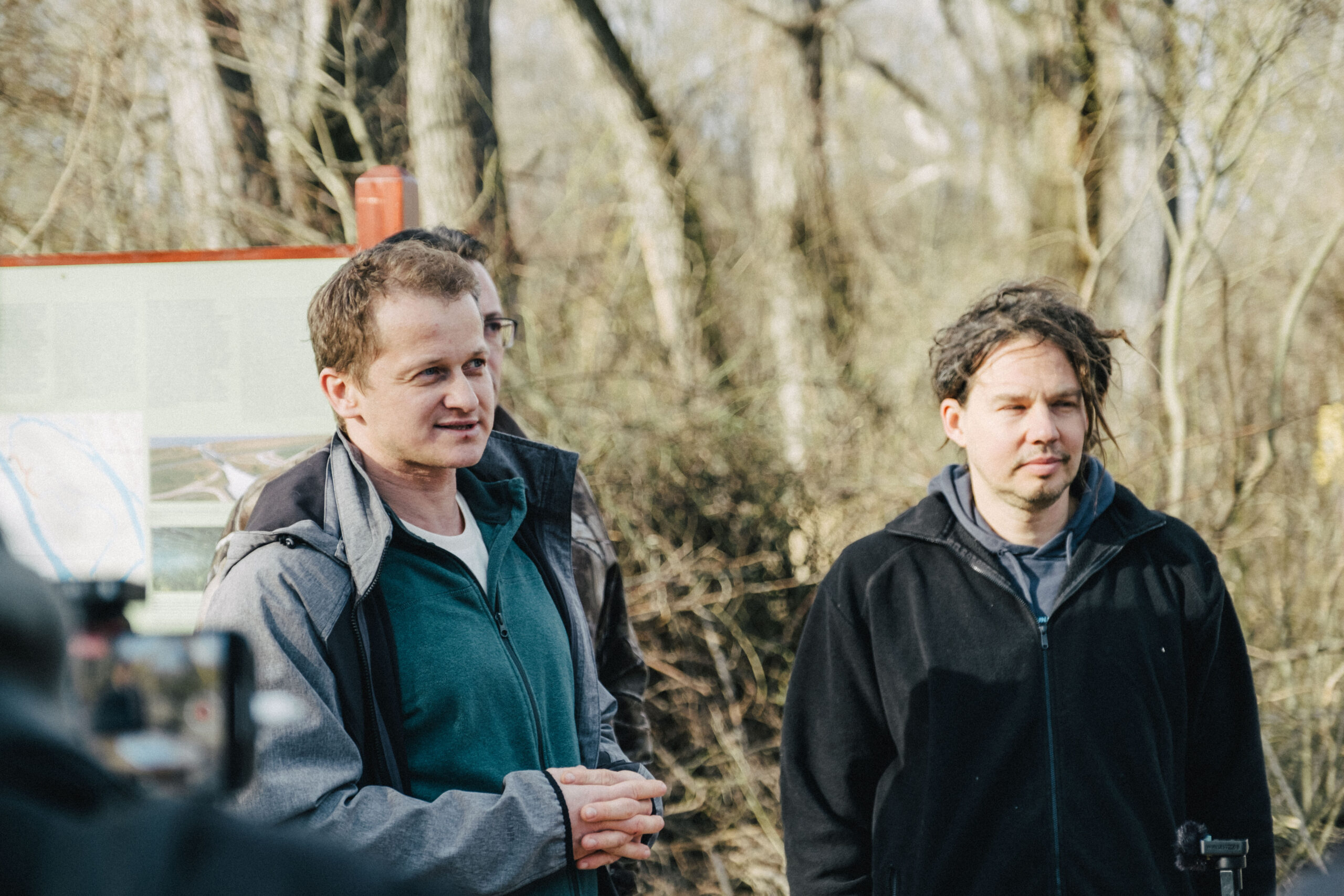
We Restore the Heart of the Danube Floodplains
On 6th of February 2024 BROZ organized a final conference of the LIFE Danube Floodplains project in the Congress Centre Divoká Voda, under the title We Restore the Heart of the Danube Floodplains.
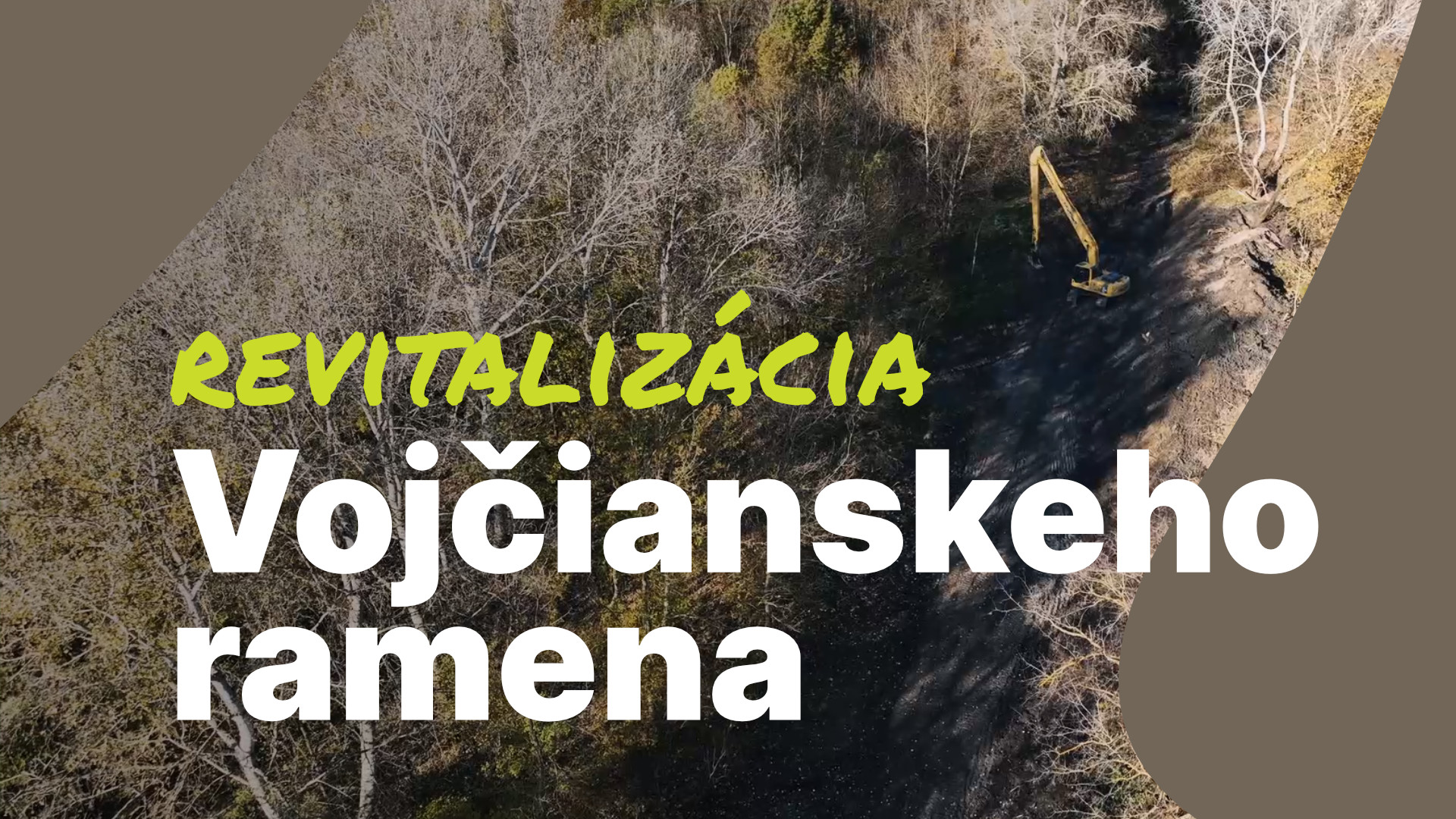
Restoration of the lower Vojčianske side arm
Rehabilitation of the water regime of the lower Vojčianske side arm is our biggest restoration in the area of the Danube inland delta so far. That's why it deserved a short video contribution.
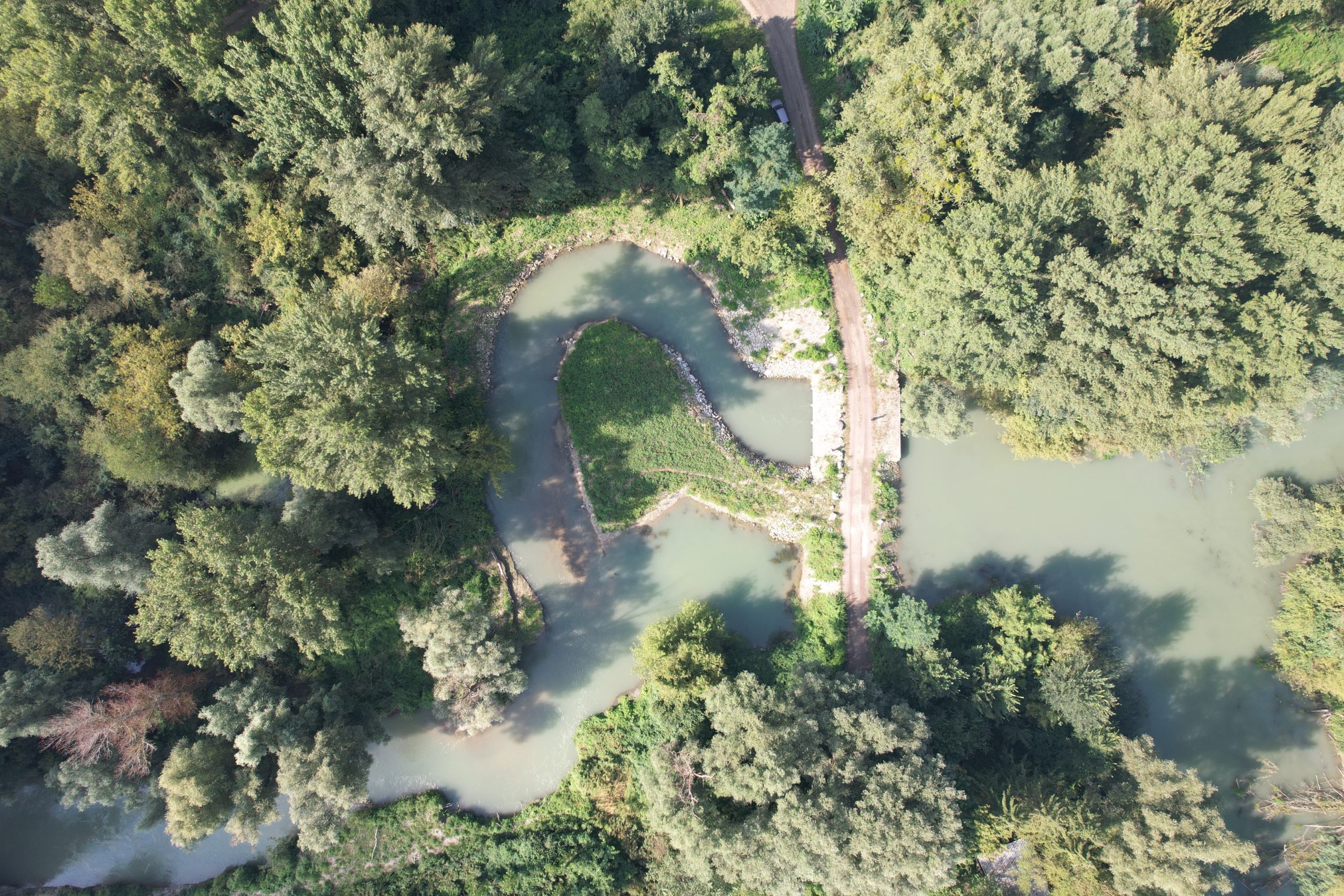
Gradual liberation of migration routes for Danube fish
Over the course of the last two centuries, people gradually changed the Danube branch system by building protective flood dams, regulating the Danube bed for navigation conditions, and later also using the river for energy purposes in connection with the construction of an artificial navigation channel (Gabčíkovo waterworks).
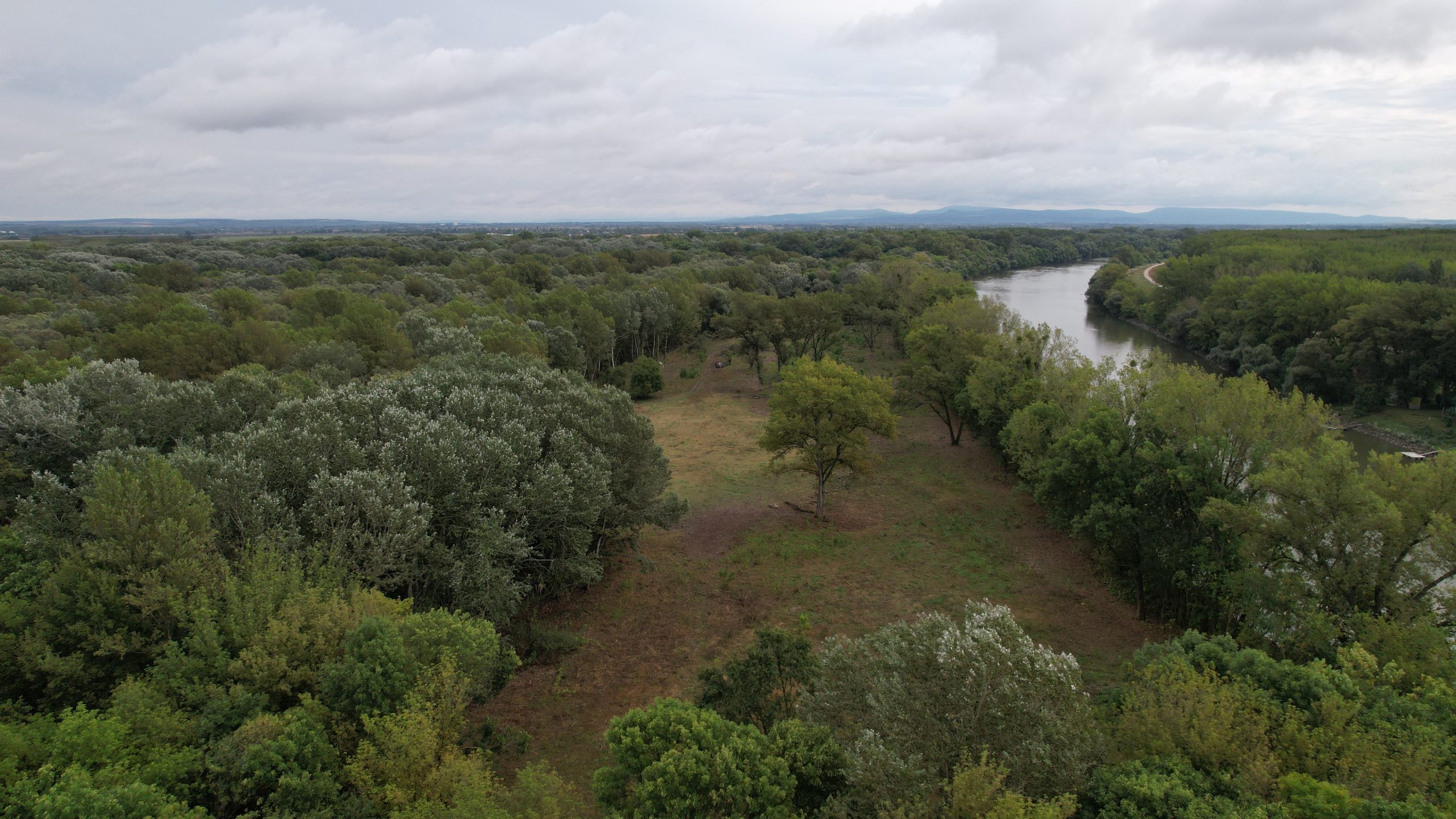
The first results of grazing on Apál Island
In August of this year, we were happy to announce the release of a herd of 20 cows on Apál Island. After several years of preparations, negotiations with farmers, processing permits, building fences and securing the overall infrastructure, we managed to restore the pasture that was once common here.
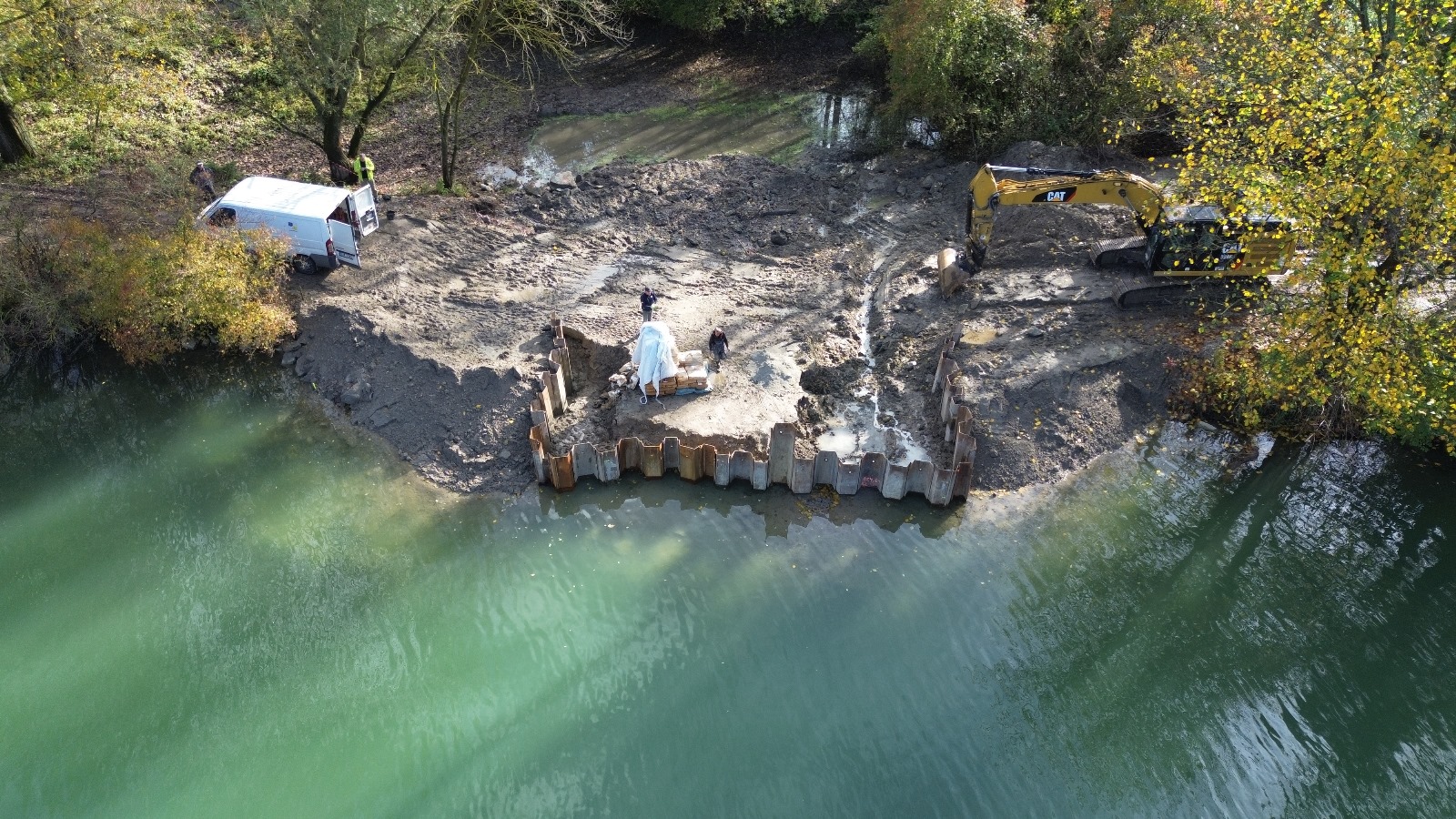
Barrier removal helps to restore a dried river branch
Works on D2a weir started in autumn. Construction of culvert will ensure flow of water into the currently dry branch which is connecting the Bodícke and Šulianske river branch.
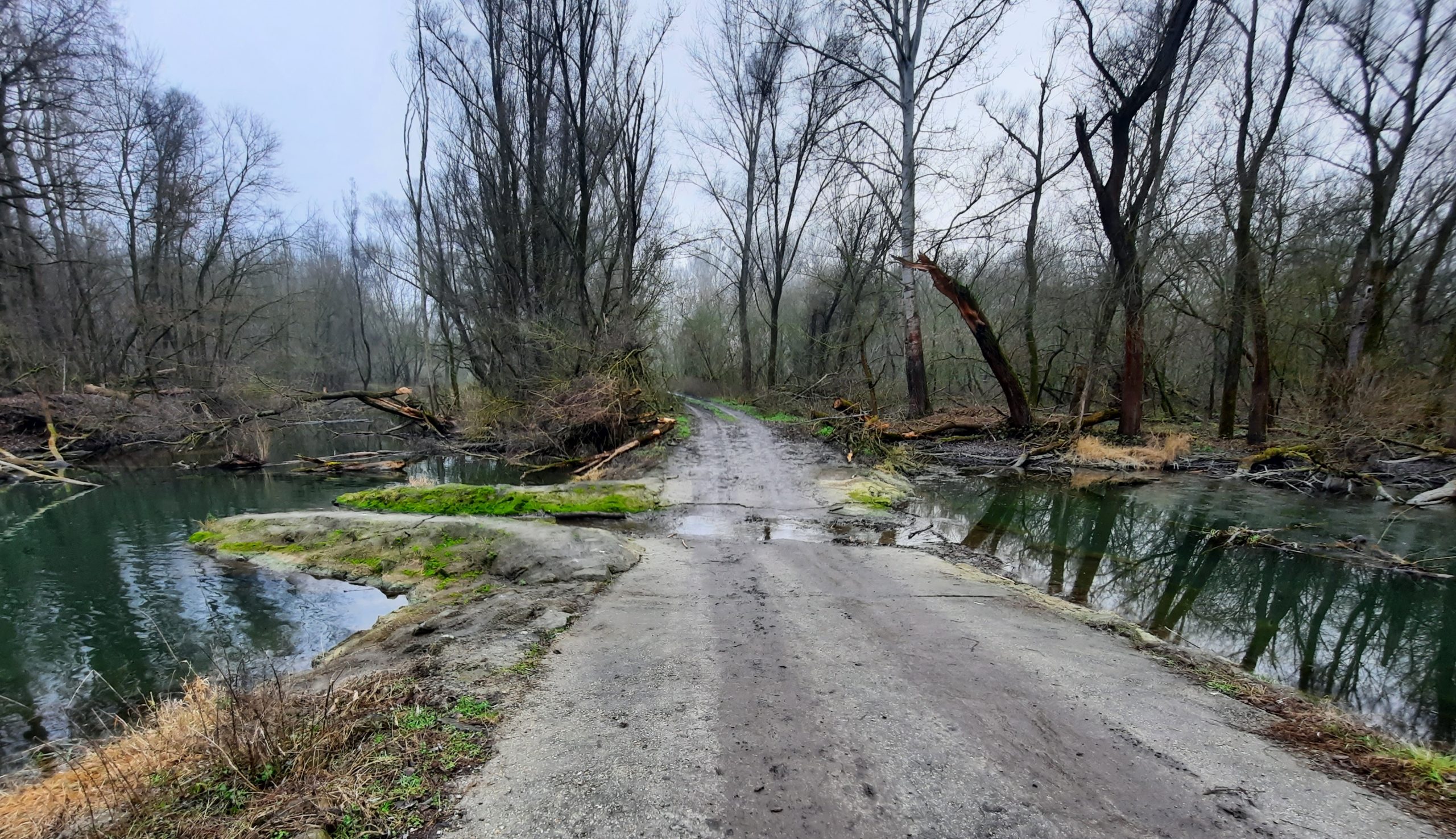
Reconstruction of a weir for fish and water sports
We are very pleased that, after a long period of processing approvals, construction permits, procurement of a supplier, in accordance with the technical documentation, work aimed at restoring water flow of the E3 weir on the line E of the Danube river branch system is under construction.
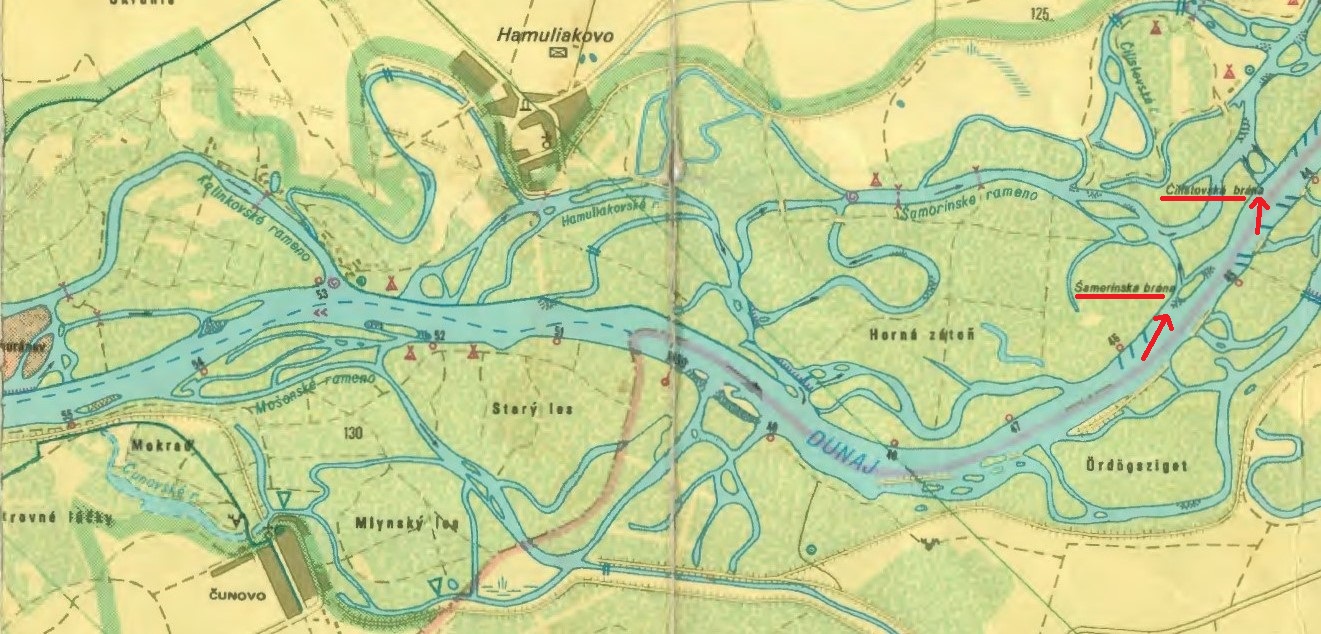
Danube Gates – where did they lead and why are they closed?
Those who knew the Danube and its branch system before the construction of the Gabčíkovo waterworks, knew what the so-called Danube gates are and where they are located. Of course, they were not real gates, but just a name for the connection of the main flow of the Danube and its branch systems.

The Influence of Simulated Floods on the Reproduction of Amphibians in the Danube River Branch System
We continued with the monitoring of amphibians at the locations of Dobrohošť, Kráľovská lúka, Bakanské rameno and its surroundings, Istragov and Dedinské ostrovy.
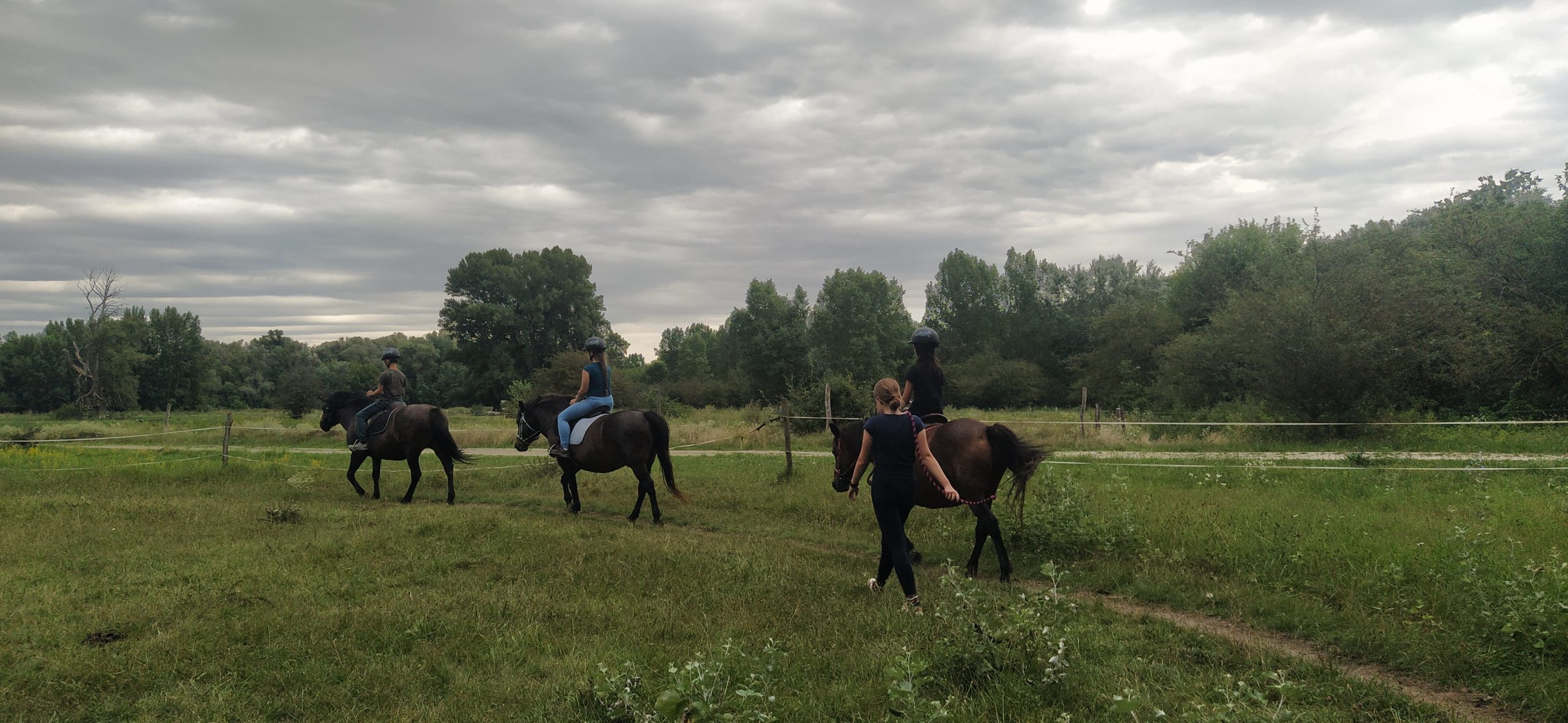
Summer camps on Veľkolélsky ostrov Island 2023
Also this year, in the summer months of July and August, we again organized six rounds of children's camps on Veľkolélsky ostrov Island, with facilities at Ekofarm Ostrov.
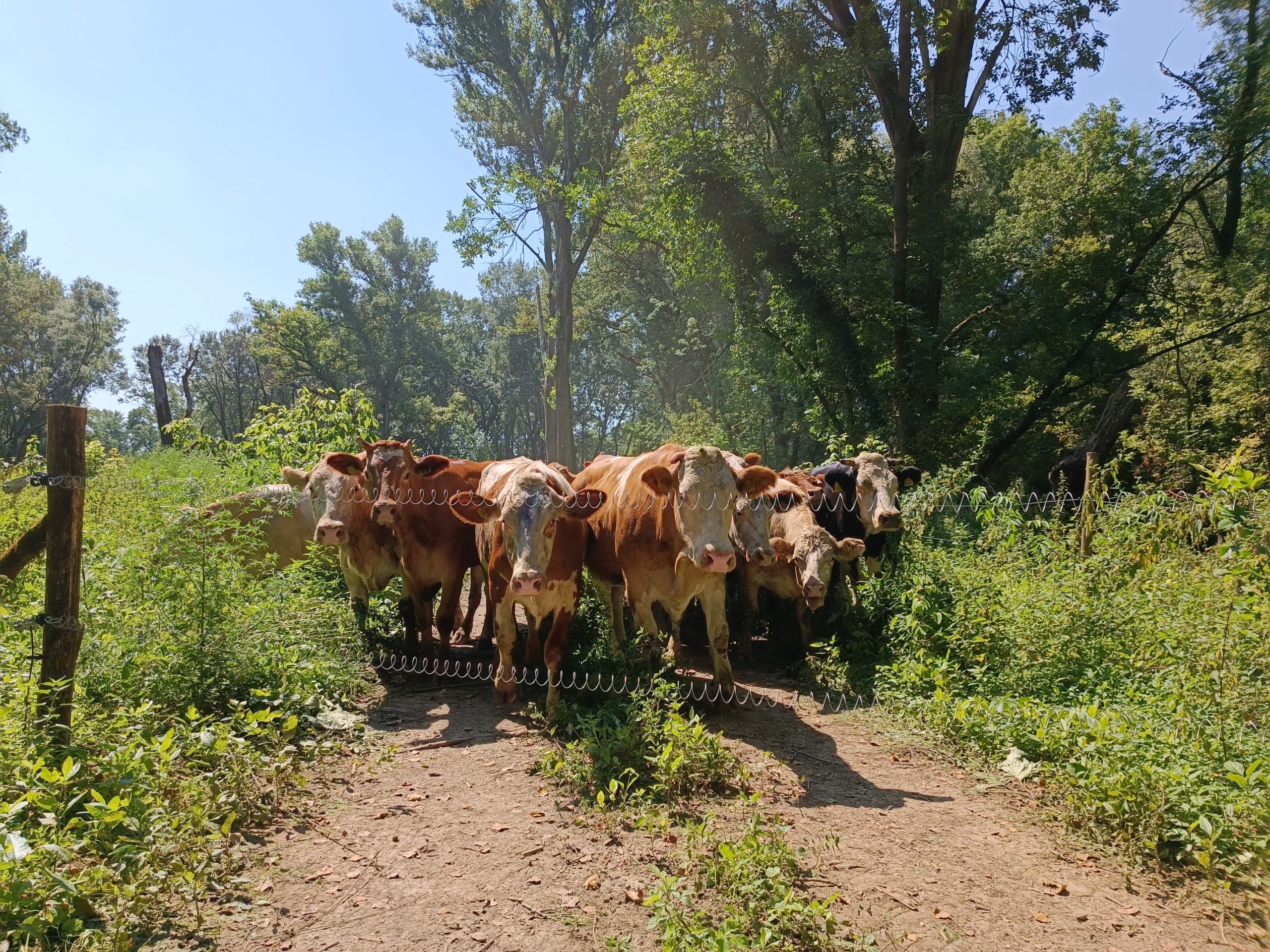
The return of grazing to Apály Island
After several years of efforts, negotiations with farmers, administrating permits, building fences and placing a well with watering holes, on August 15 we managed to bring cows to Apál Island, located at the confluence of Váh and Old Nitra rivers.
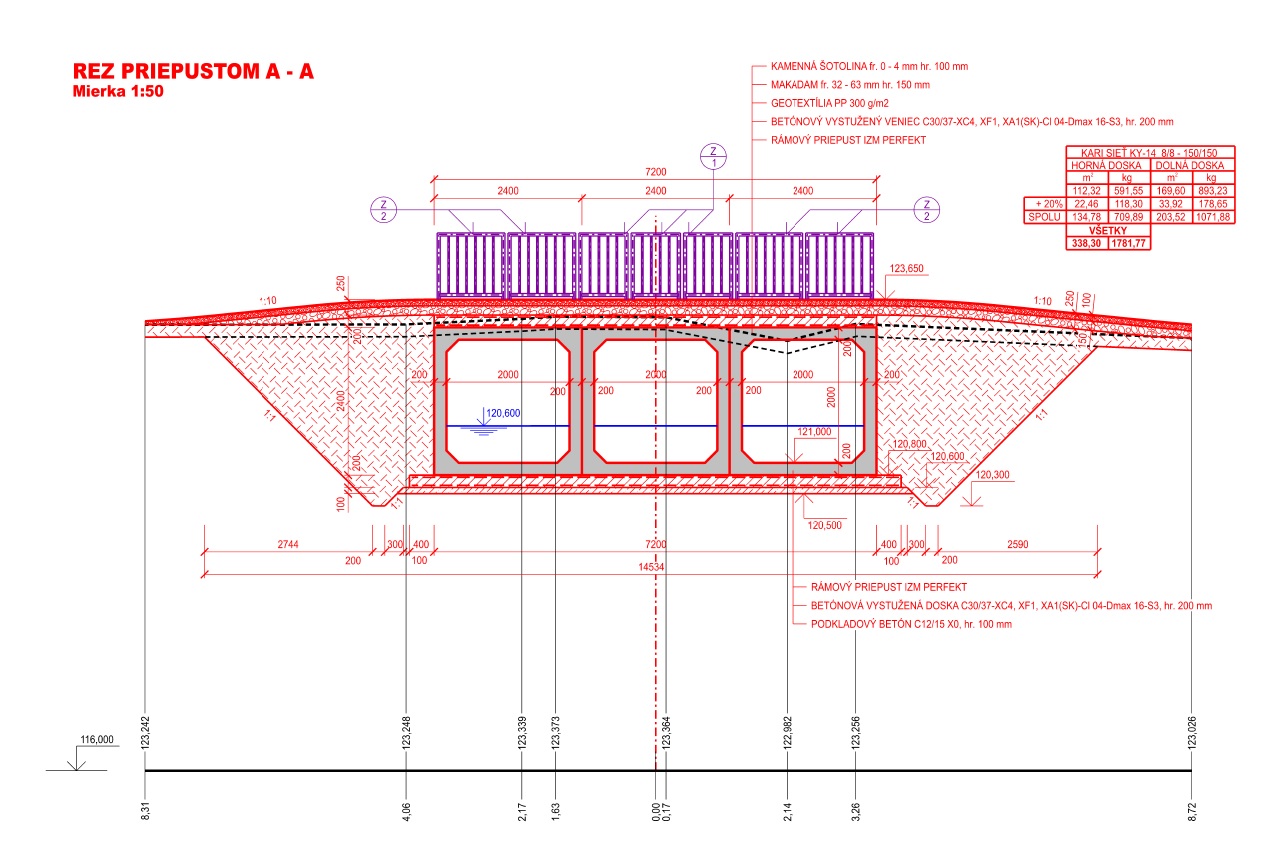
We are preparing the complex restoration of Vojcianske side arm
We are changing pipe culverts to frame culverts. We are following with this activity on Vojcianske side arm
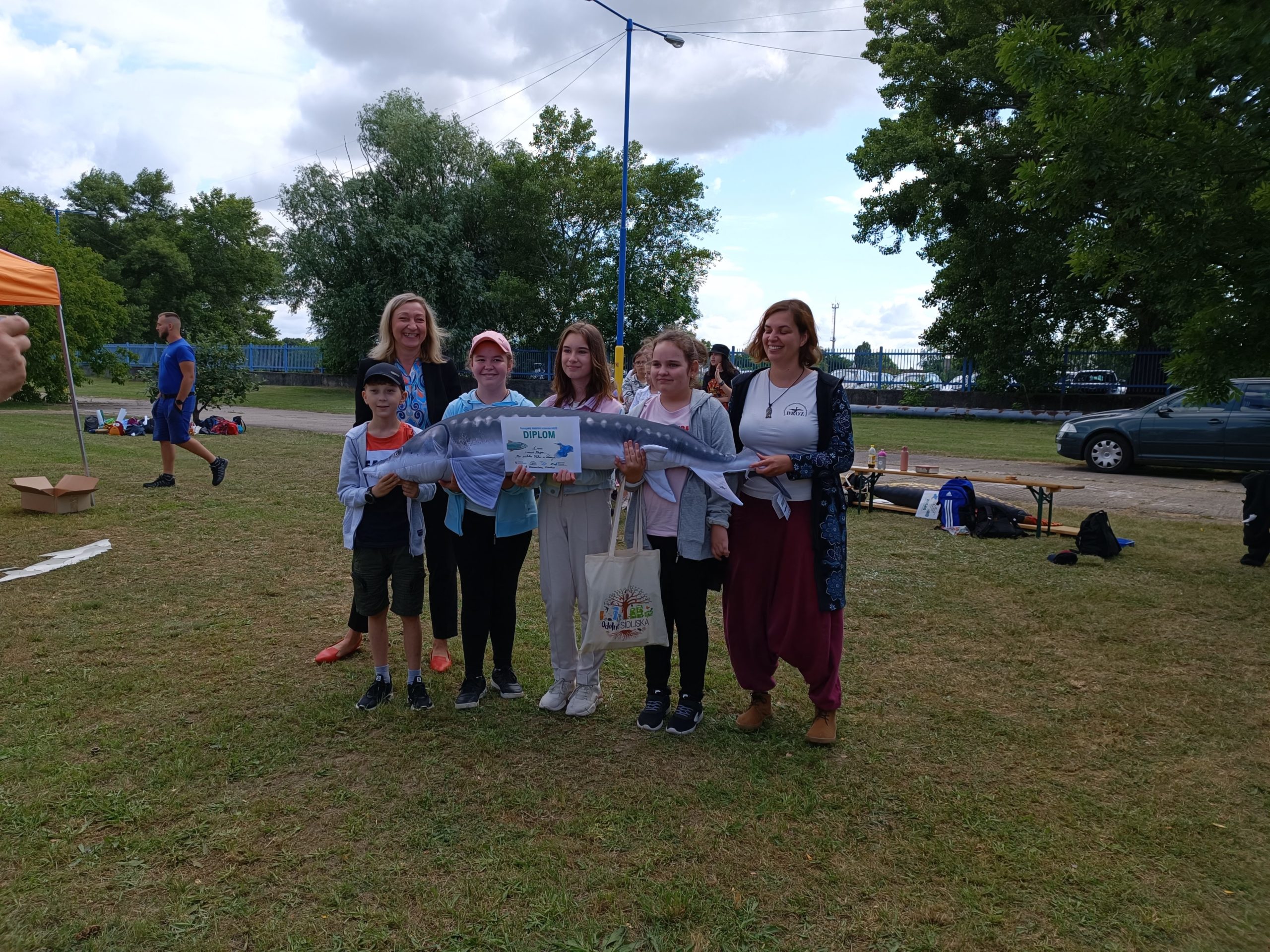
Danube Art Master 2023
BROZ is the coordinator of the Danube Art Master competition in Slovakia, a competition that since 2004 has brought together thousands of children from the countries through which the Danube River flows. The aim is to encourage children to recognize the value and importance of rivers.

Preparatory works for the restoration of the river branch in Kráľovská lúka
The first step towards the restoration of the river branch in the Kráľovská lúka area was the preparation of an expert study by specialists from the Water Research Institute.

We continue to restore the floodplain forest
At the beginning of this year, we planted a total of 4 850 seedlings in the project areas in Vojka nad Dunajom and on Veľkolelské Island (PLA Dunajské luhy).
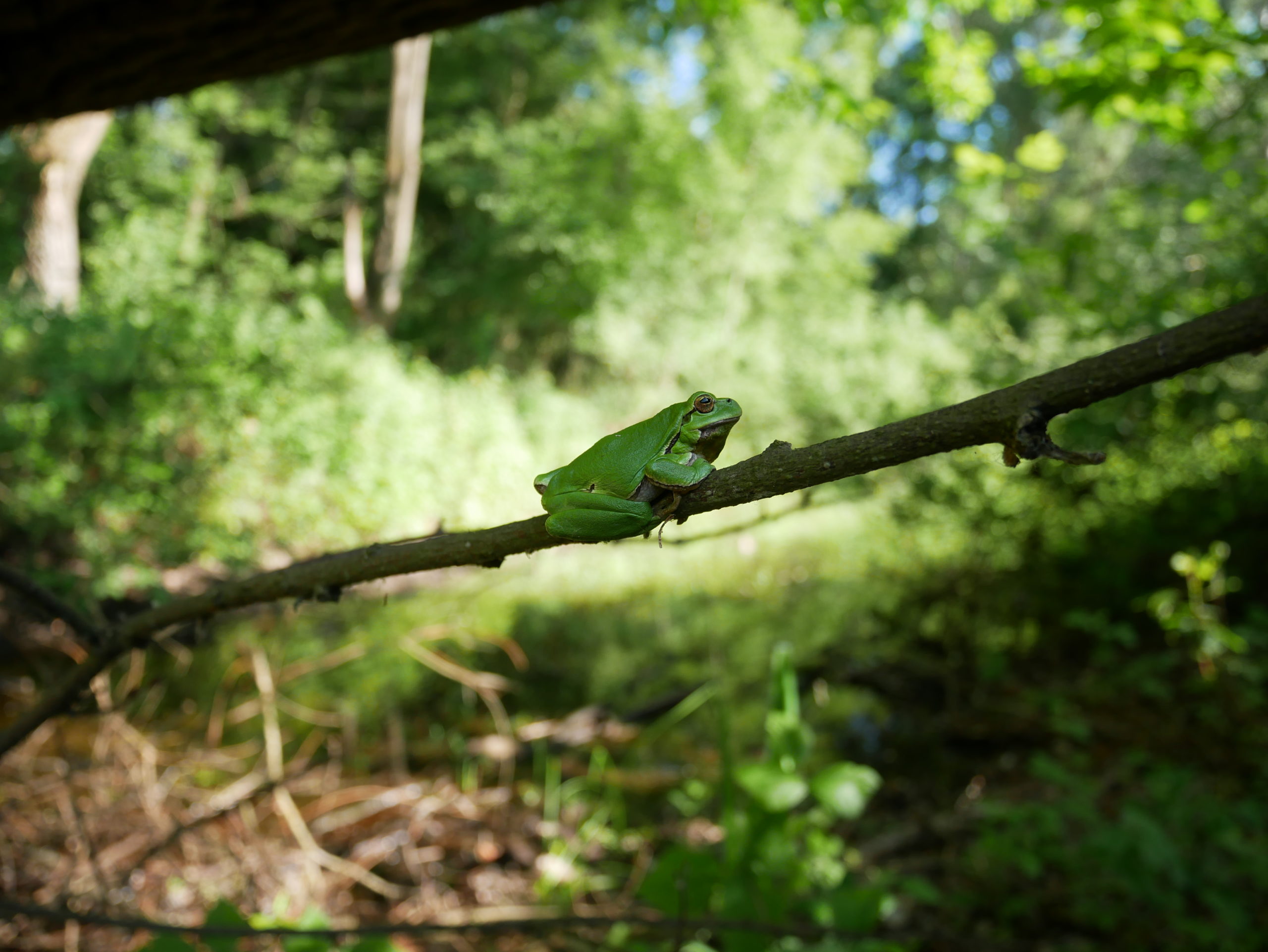
Monitoring of amphibians of the Danube floodplains 2022
In the frame of the project LIFE Danube floodplains monitoring of amphibians continued also during the 2022 season. Several areas within six locations were monitored. Amphibian reproduction was greatly affected by the simulated flooding regime.
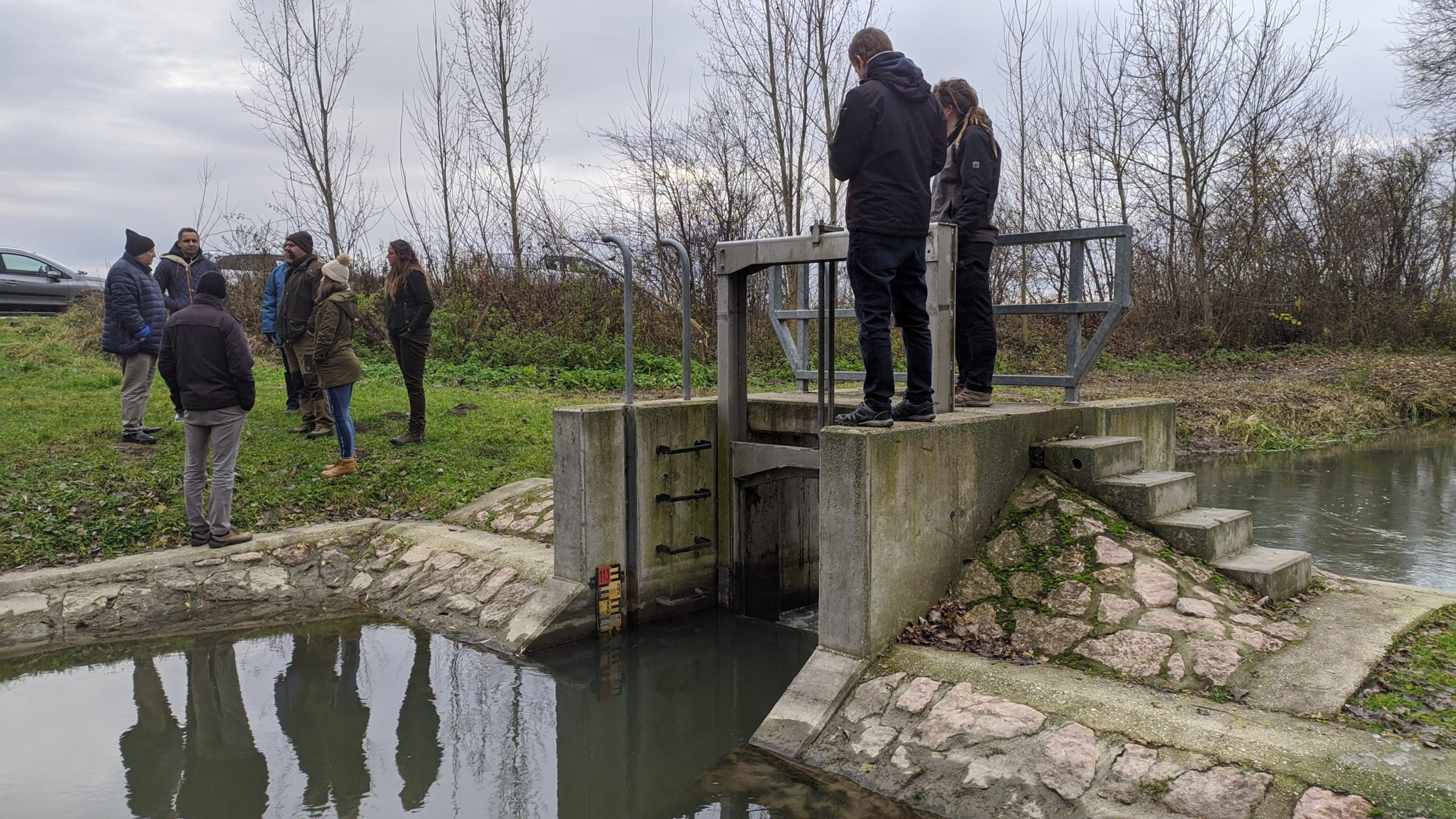
Visit of water management facilities in Hungary
As part of networking with other organizations, we initiated a visit of technical water management facilities in Hungary in Vámosszabadi and Ásványráró in December.
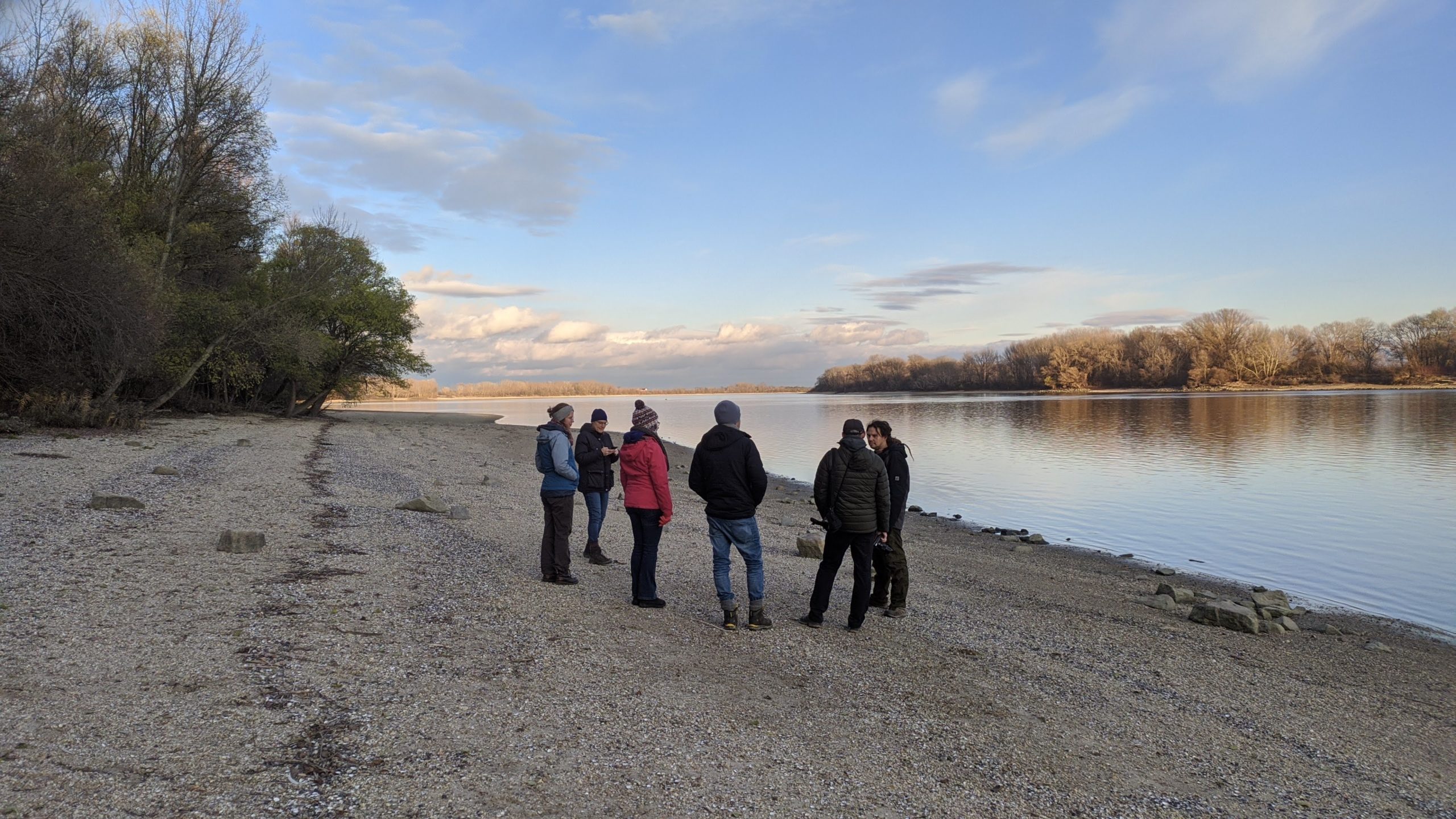
Networking with LIFE Isar project
Between 5.-7. of December we welcomed a delegation from Germany. Representatives of the LIFE Isar project visited our project area. Together we discussed the management and financing of project activities, conservation problems and possible solutions and visited several of our locations.

Project monitoring visit 2022
In the course of each LIFE project, control monitoring visits are regularly held to monitor whether the activities are progressing according to plan. This year on 11.-13.10. the LIFE Danube Floodplains project was inspected by an external monitor from the NEEMO team.

From mowing to rare findings
In March 2017, in cooperation with the local agricultural association, we restored by grassing an area (approximately 23 ha) of waterlogged fields and degraded meadows near the Číčovské dead arm.
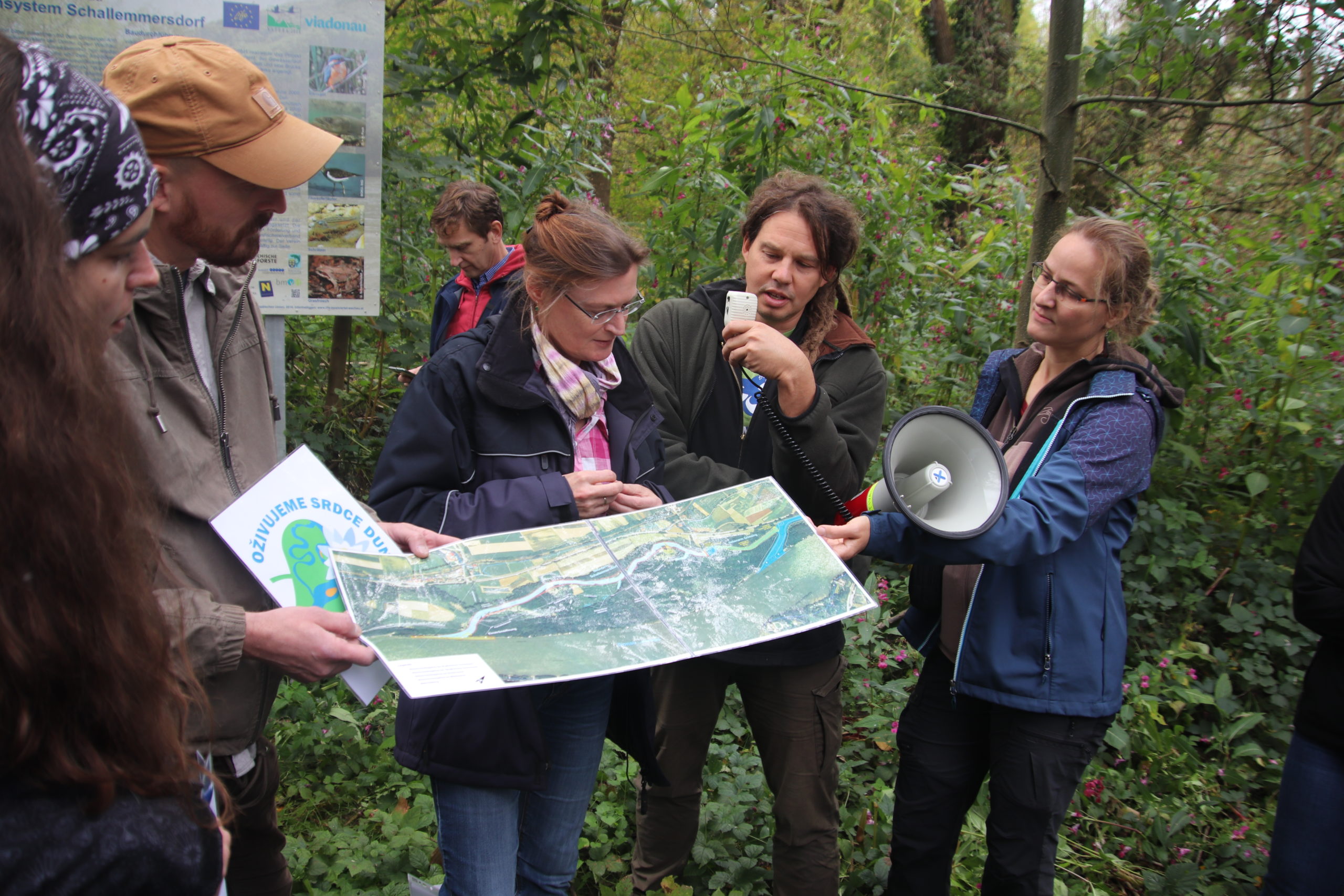
A marathon of restoration inspiration and motivation at a dynamic river pace
At the beginning of October 2022, we organized an expert excursion where we visited sites with significant and extensive restoration measures on the Danube (in Austria) and several sites with implemented restoration measures on the Isar river in Germany.

New information boards along the Danube
Currently, as part of the LIFE project Restoration and management of Danube floodplain habitats, we installed 9 new information boards at strategic locations within the Dunajské kriviny, Bodíky, Veľkolelsky and Apálsky ostrov islands.

Summer pastures diversity
The diversity of micro-environments created by the mouths and teeth of grazing cattle could be compared to the diversity of infrastructure in a city.

New informational and promotional materials about the Danube Floodplains
In the frame of the Restoration and management of Danube floodplain habitat LIFE project we prepared this year new informational and promotional materials. Beside the wall calendar for 2022 we published also other language versions of project leaflet (currently available in Slovak, Hungary and English).
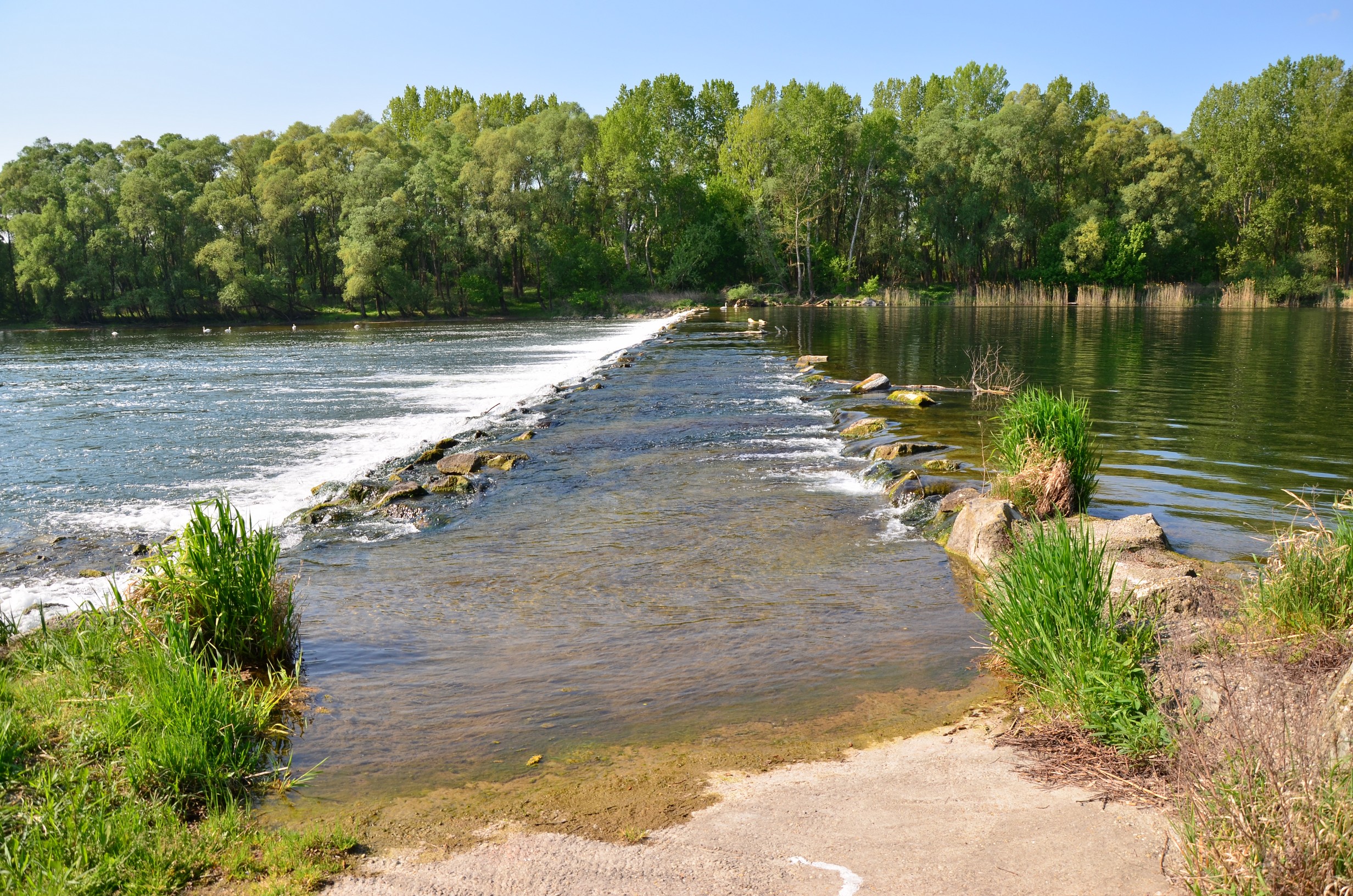
Weirs Digitalization in Danube River Branch System Helps to Manage the Unique Natural Environment and Improves Safety
Thanks to the cooperation with VÚVH, 12 pieces of MERATCH equipment were deployed, which are placed on individual weirs within the Danube branch system and monitor the state of the water level with an accuracy of 1 millimetre.
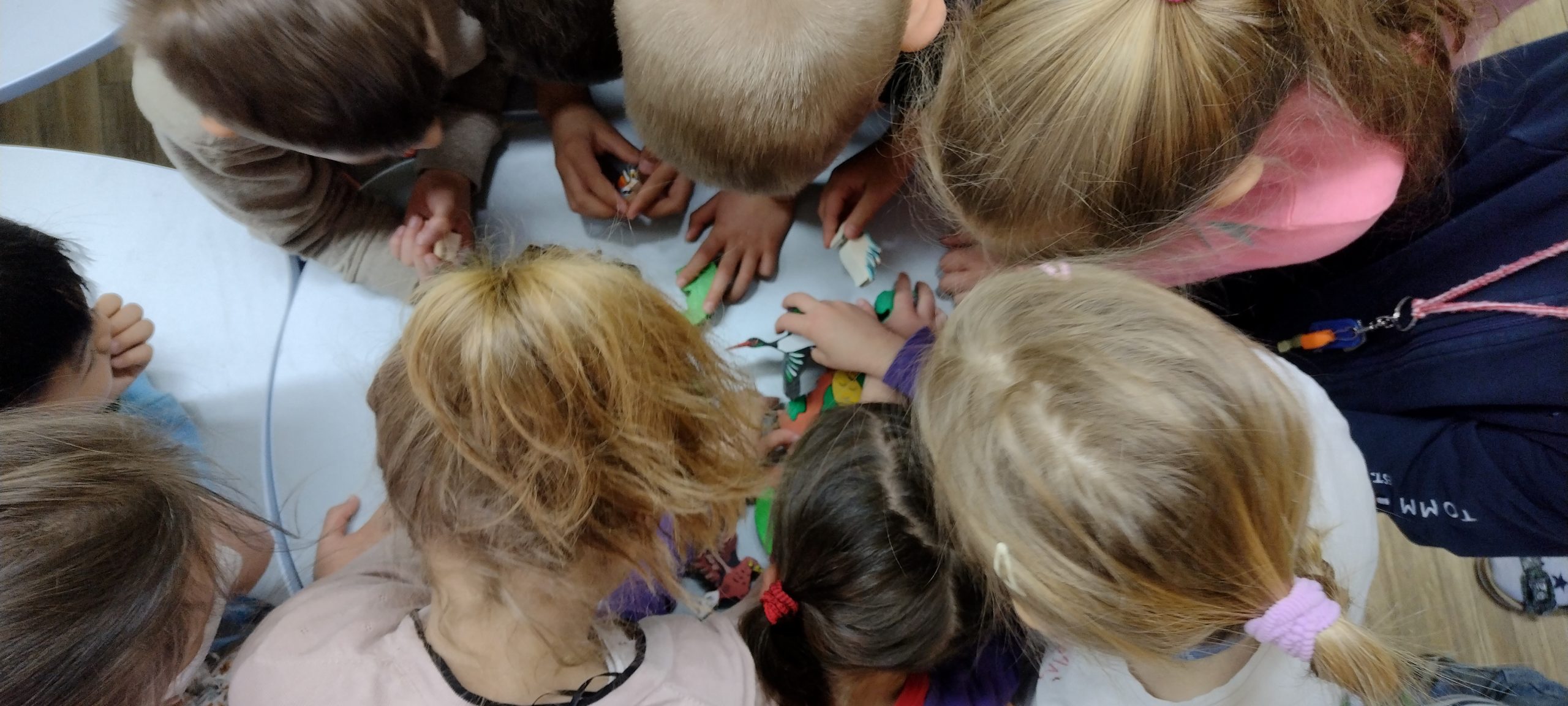
The Danube Visited a School
As part of spreading awareness about the nature protection of the Danube region, we organized two lectures for schools. Children from the 1st and 3rd grade of J. A. Komenský Elementary School in Bratislava had the opportunity to learn a lot of new and interesting information not only about the Danube River itself, but also about the adjacent floodplain forests and wetlands...

Apálsky ostrov Island – Forest reserve at the confluence of rivers
National Nature Reserve Apálsky ostrov with 5th the highest degree of protection represents one of the exceptional and rare project sites of BROZ. This area with surface of 85.97 ha was declared in 1954 to ensure the protection of unique communities of willow-poplar floodplain forest.
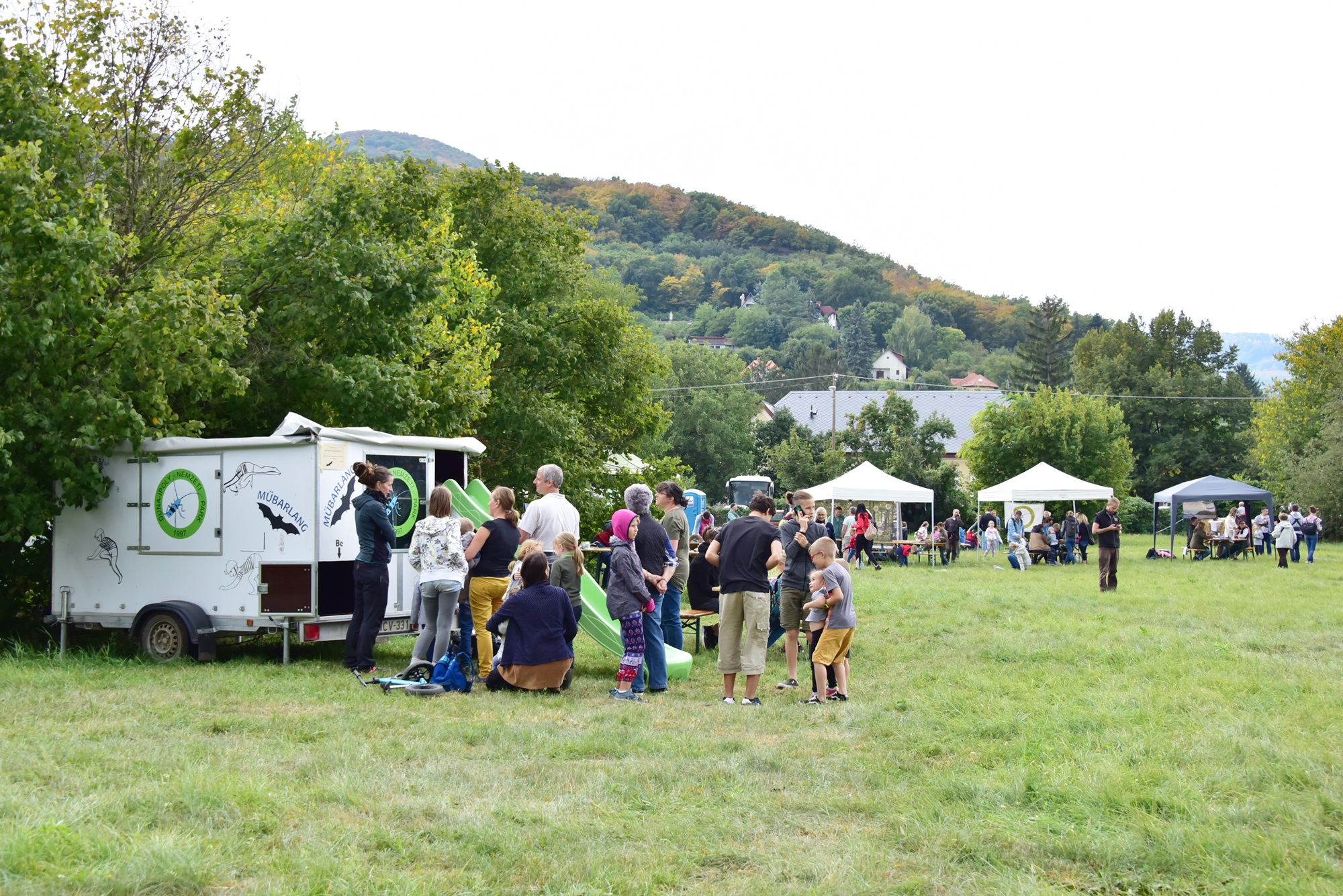
Cooperation with national park Danube-Ipel
The current project Restoration and management of Danube floodplain habitats is not the first on which BROZ cooperates with the Hungarian partner National park Danube-Ipel. In the past, we have joined together an international network of protected areas on the Danube called Danubeparks and in the frame of this partnership we already participate in the fourth project.
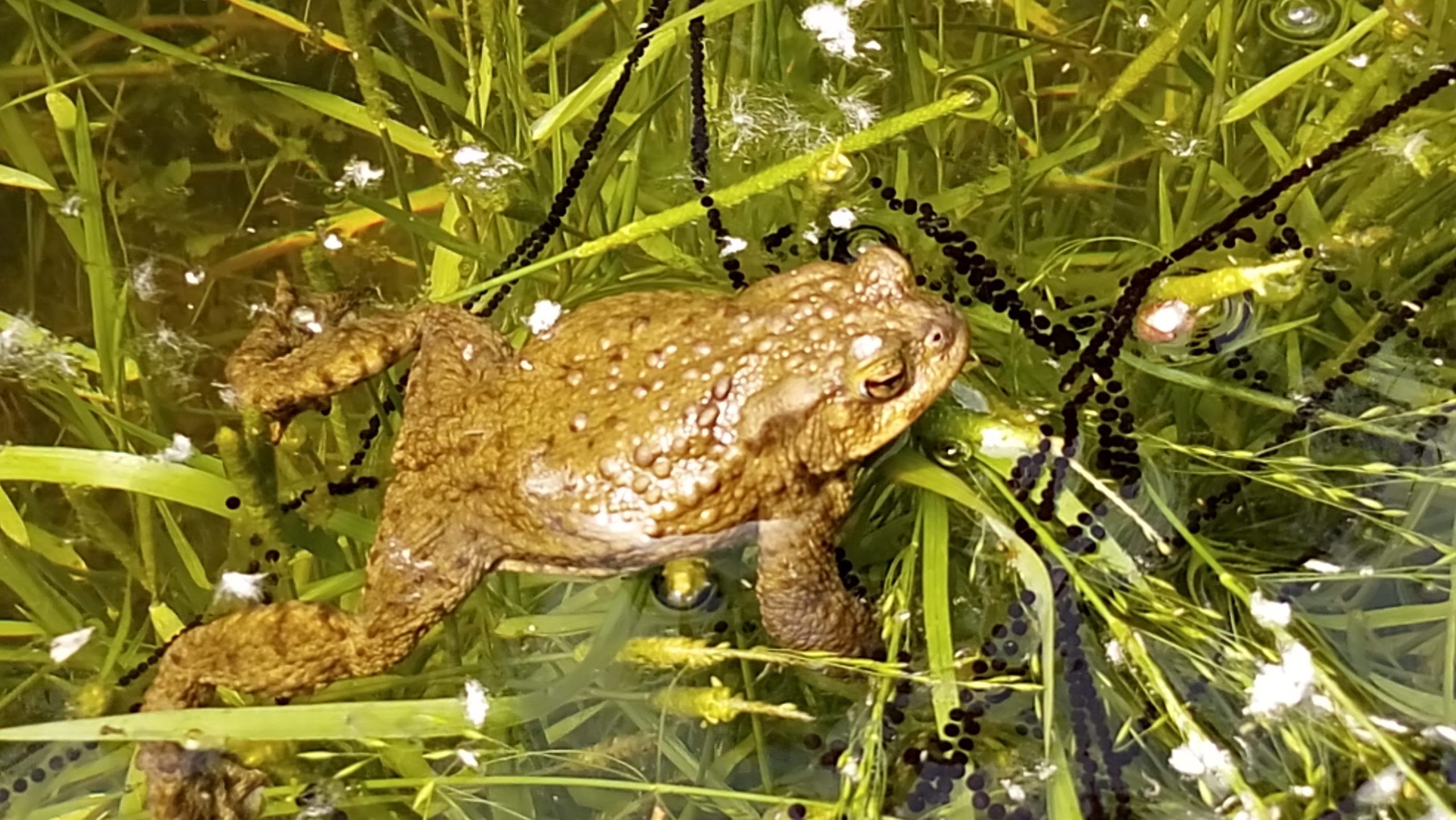
Importance of simulated floods for amphibians of the Danube inland delta
The area of the so called Danube Inland Delta between Bratislava and Sap used to be full of life. The unique system of river branches, periodic floods and healthy floodplain habitats offered an optimal environment for the reproduction of fish and amphibians.
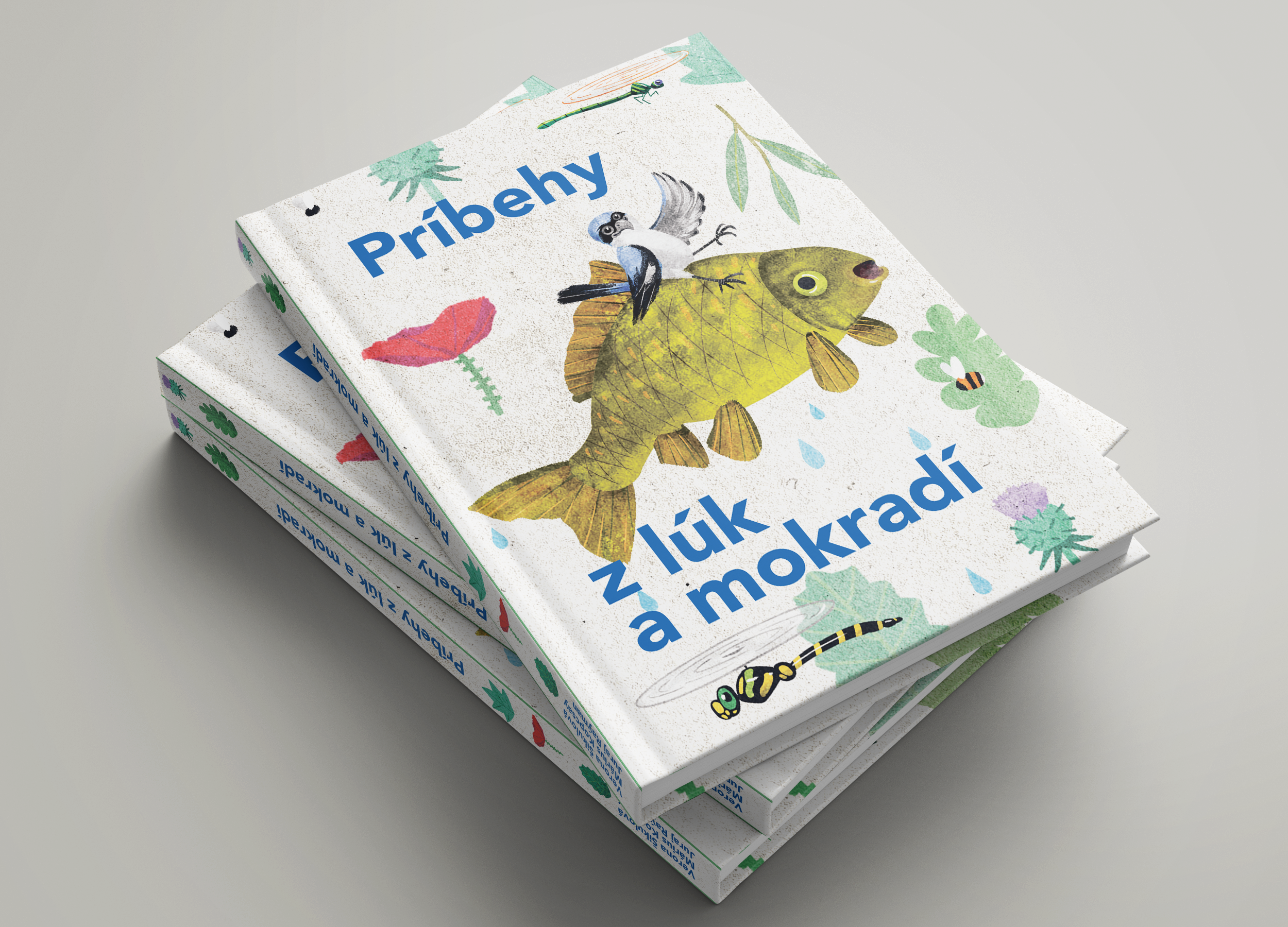
The children’s book fundraising campaign was successful
Throughout the month of July, a crowdfunding campaign was active to fund the publication of our children's fairy tale book - Stories from the Meadows and Wetlands. We are pleased to say that the campaign was successful.

During the floods, the Velky Lel island were Velky Lel islands
The level of the Danube has risen by about 4 meters in recent days. This brought life-threatening floods to the landscape and nature of the Danube region.

A summer simulated flood is taking place in the Inland Delta
The water flow is lower than agreed. Two simulated floods of the Danube inland delta take place after a long time. After a series of negotiations and a successful petition, we managed to enforce what is approved in the Manipulation plan for the Gabčíkovo water dam. Until now, the flooding process has been depending on a complex administrative process.

In the 2020/2021 season, we planted more than 30,000 trees
In the winter, when it is the best time for tree planting, we planted more than 30,000 trees - the native tree species of the Danube floodplain forests.
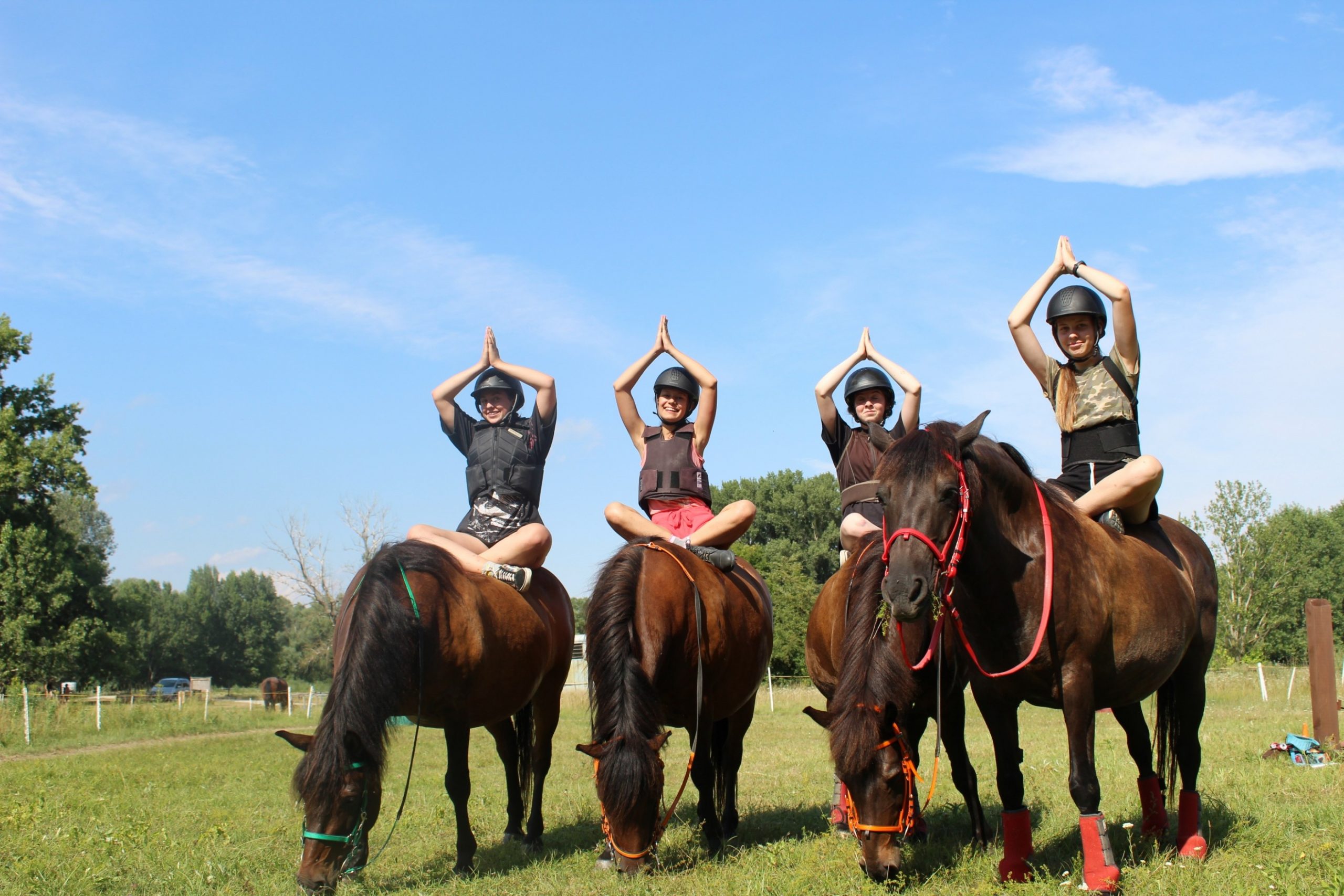
In the summer we organize conservation camps again
In the summer months - July, August, as every year, we organize five tours of children's summer camps on Velky Lel Island.
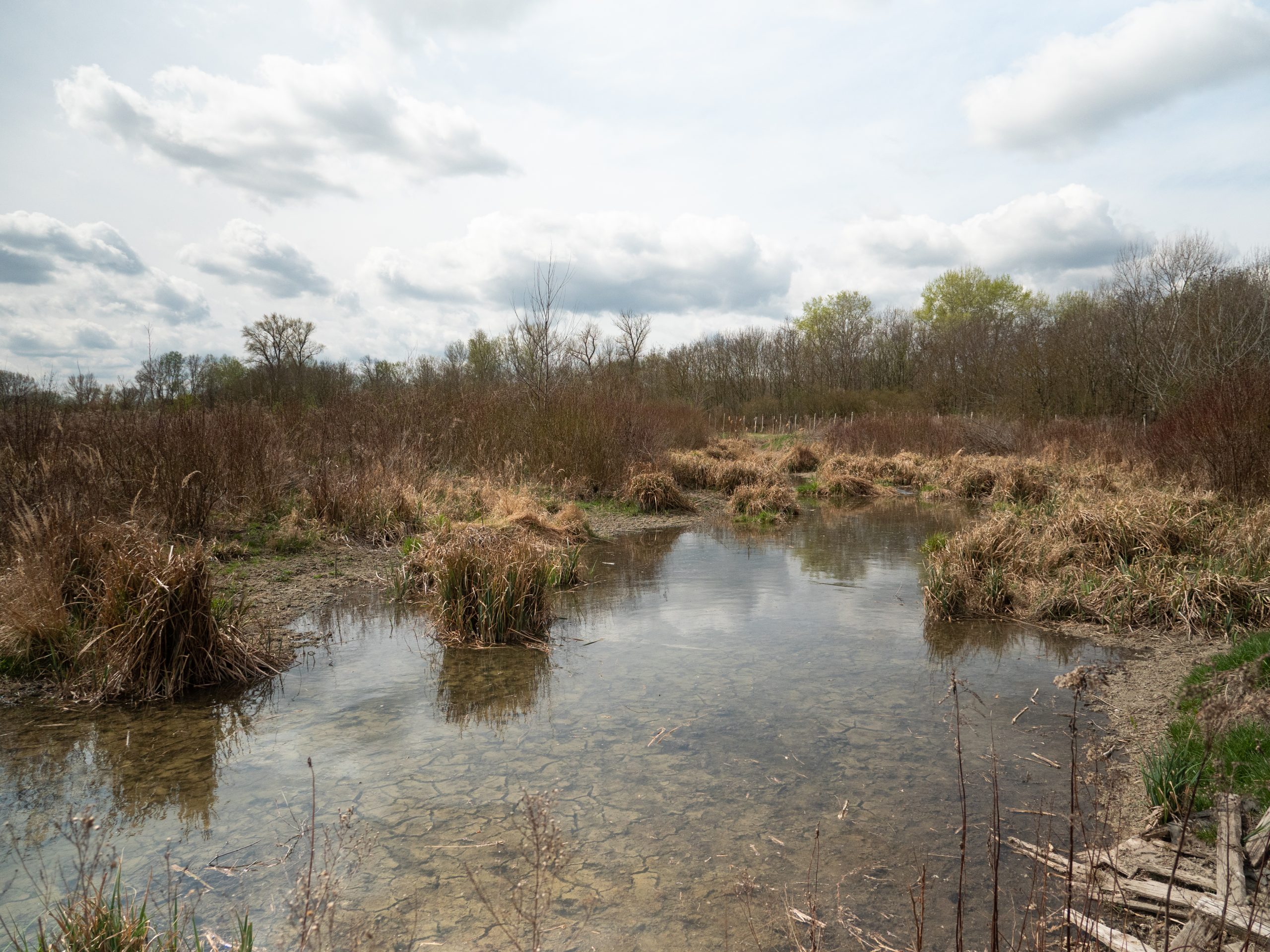
A simulated flood begins in the inland Danube delta
Two floods of this rare wetland will take place this year. We are looking forward to it, but we are still only halfway there.

Invitation to a frog concert
Did you know that rivers and wetlands are considered one of the richest ecosystems in terms of diversity of life? During the last century, however, almost 90% of them have been lost due to human intervention, which is also related to the decline of frogs. In the past, therefore, "frog concerts" during the spring were a common part of the stay in nature, now it is increasingly rare to find places where we can enjoy them.
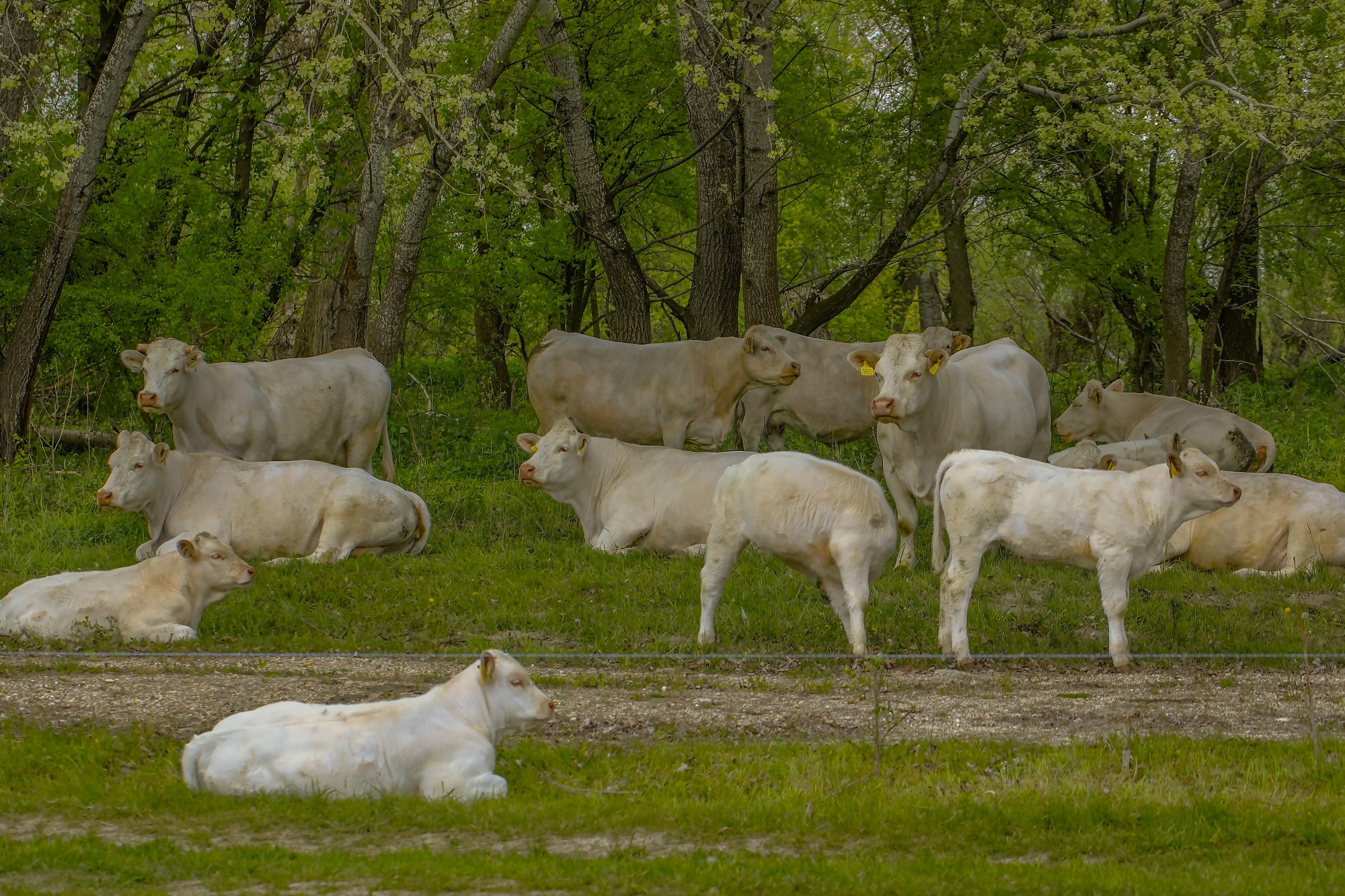
We continue this season with grazing in Bodíky
In the area of the Inland Danube Delta in the cadastre of the village of Bodíky, in 2020 we expanded the grazing of cows on floodplain meadows by approximately 8 ha. In order to support biodiversity, in addition to grazing on the site, we cut head willows.
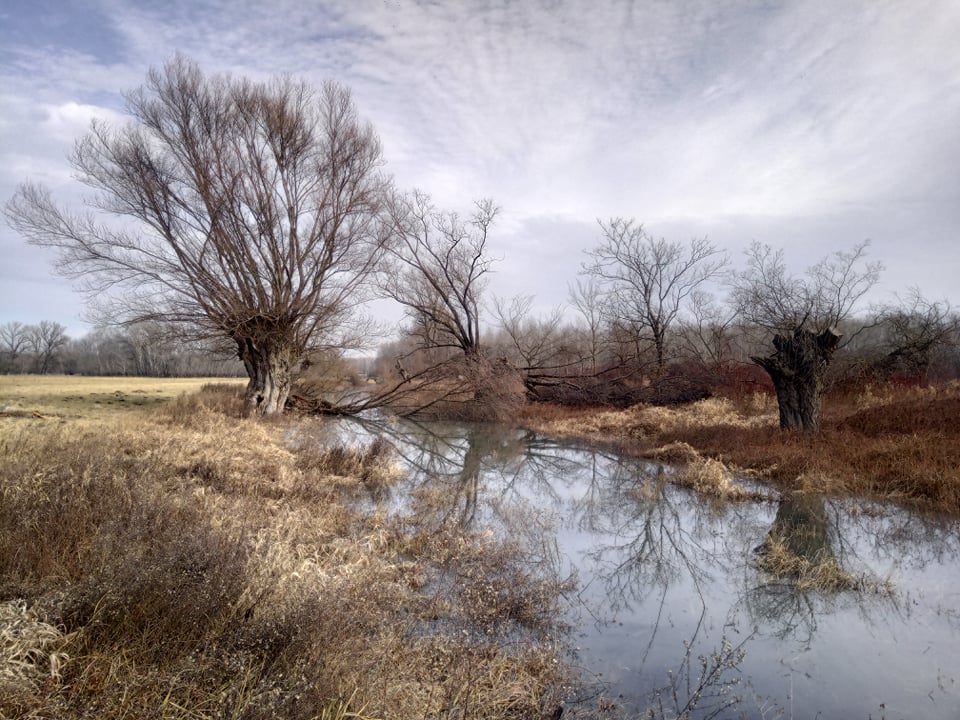
To Velký Lél Island only in rubber boots
Currently, the wetlands on Velký Lél Island are full of water. A few years ago, we did such a thing - we changed the slope of the bottom in the drainage channel. It was a canal designed to drain water from Velký Lél Island. It was built in the past so that the water from the island flowed away after the floods sooner and people could use the meadows for grazing cattle as soon as possible.
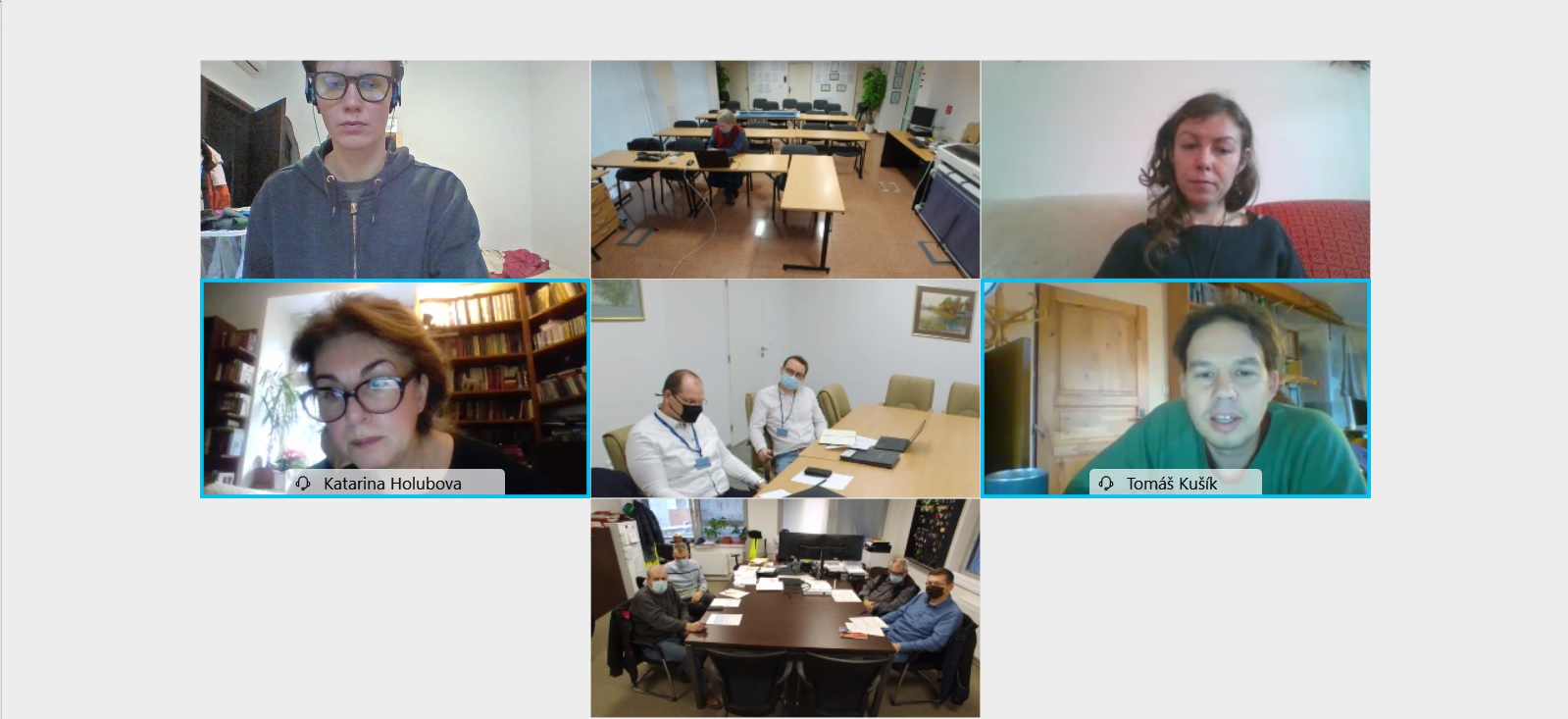
We are discussing the petition for the rescue of the Inland Danube Delta
The petition for the rescue of the Inland Danube Delta, signed by 11,603 people, serves as a basis for negotiations with the Water Management Enterprise and the Ministry of the Environment. We aim to increase the amount of water that flows in the Inland Danube Delta.

Minister Ján Budaj took over the petition for the rescue of the Inland Danube Delta
We delivered a petition for the rescue of the Inland Danube Delta to the Minister of the Environment, Ján Budaj. The petition was signed by 11,603 people.
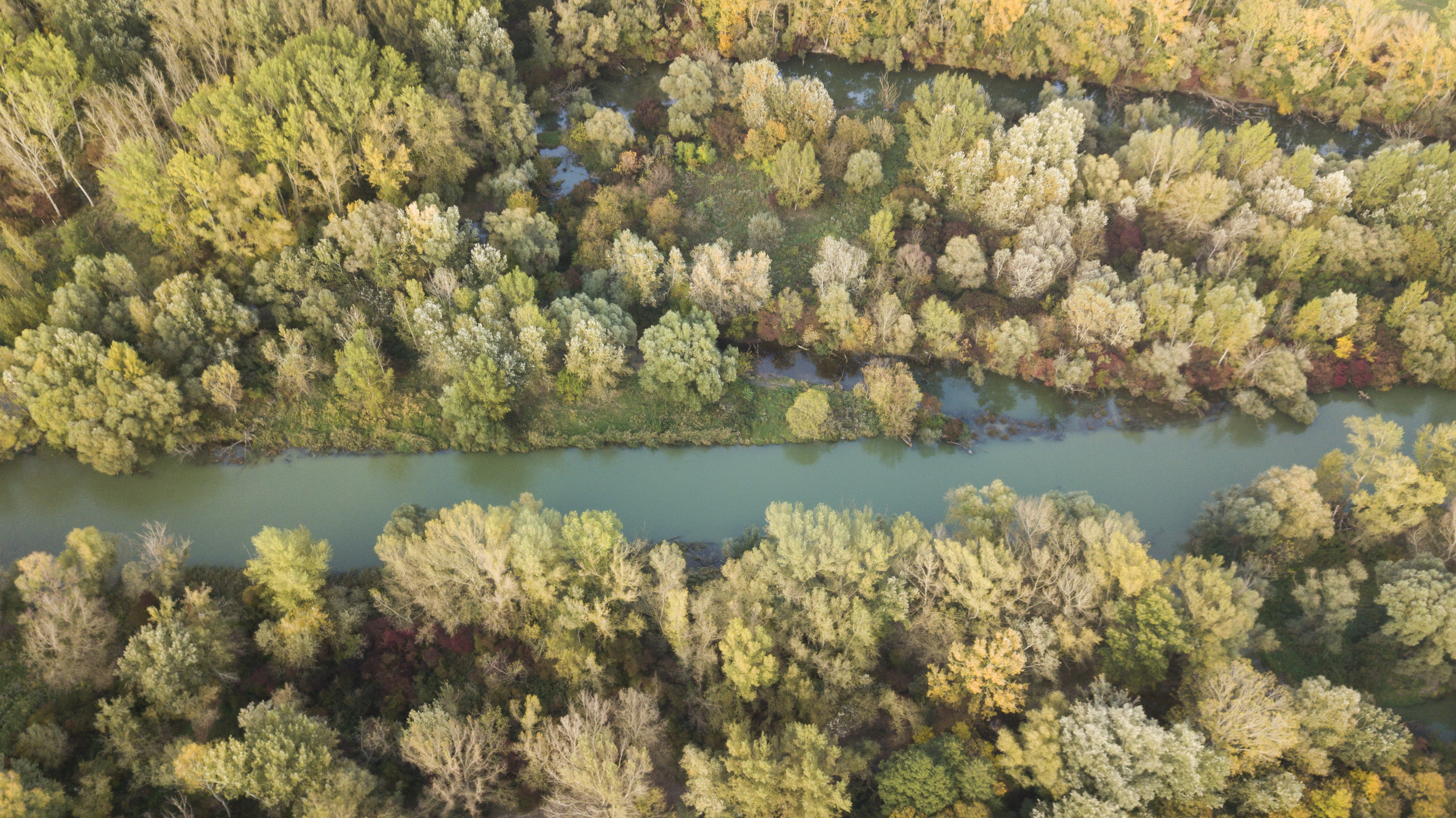
Petition: Save the Danube inland delta
Dear Minister of the Environment, We, the signatories of this petition, turn to you in demand of a modification of the Temporary management terms for Gabčíkovo – Nagymaros Barrage System in the territory of Slovak Republic in order to provide the necessary care and protection for the last remains of the Danube inland delta in Slovak territory.

How restoring floodplain forests helps the climate
Floodplain forests are often overlooked in the search for solutions of climate change. However, floodplain forest restoration can play a very important role in reducing CO2 concentrations in the atmosphere. Trees have the ability to capture large amounts of CO2 from the atmosphere and store it as carbon in their tissues. An adult tree can sequester up to 22kg of CO2 in one year. As a result, forests are extremely important in slowing down the ongoing climate change caused by high concentration of CO2 in the atmosphere as a result of burning of fossil fuels and habitat destruction.
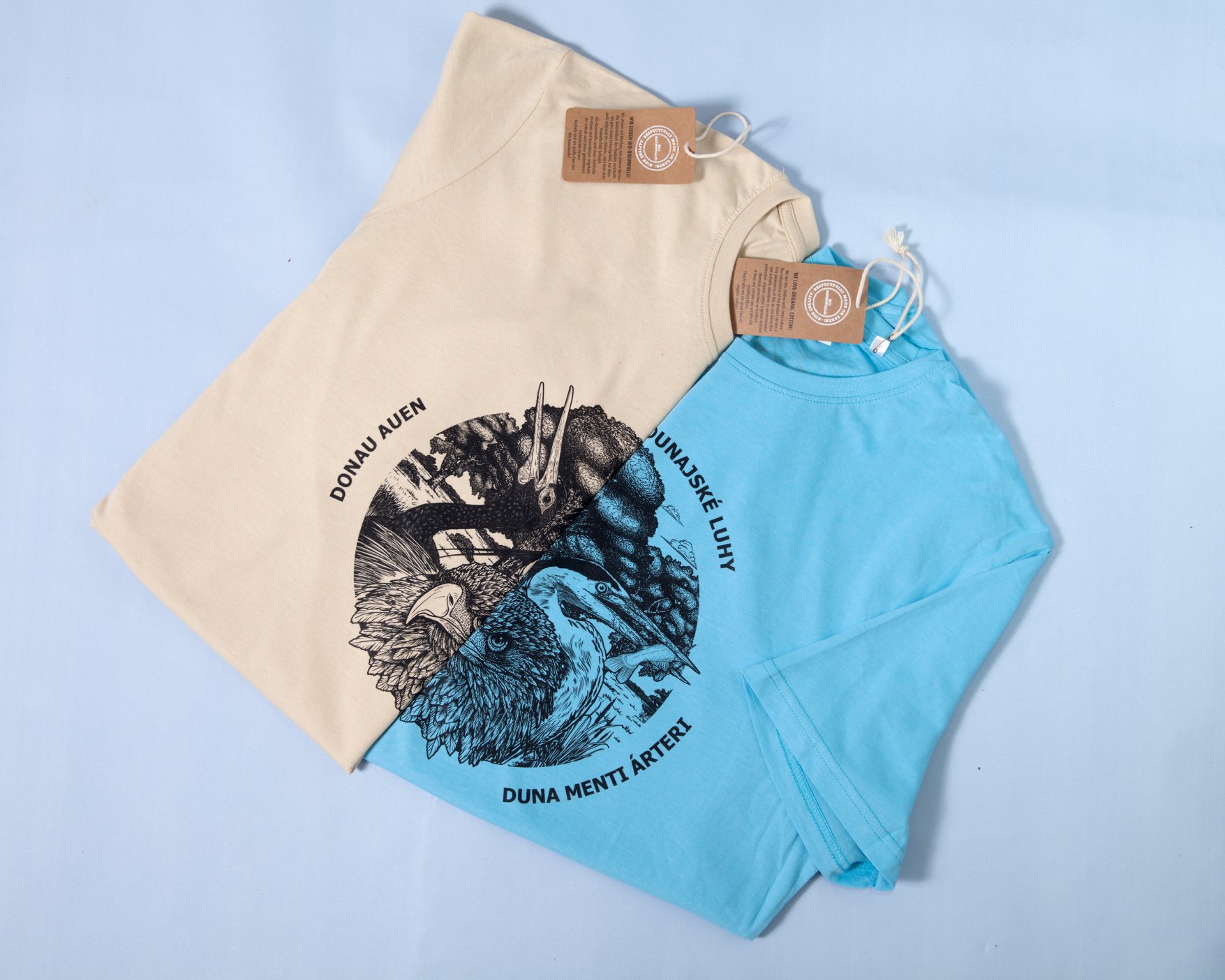
Support the Danube floodplains conservation – you´ll get a T-shirt
Make yourself, your friends or family happy and get a nice Christmas present! Wear a T-shirt with mandala of Danube nature made by an art graphic designer Riki Watzka – you will support the conservation of Danube floodplains. Support the conservation of Danube floodplains with 20 Eur or more and we will be glad to send you our original T-shirt made of organic cotton.
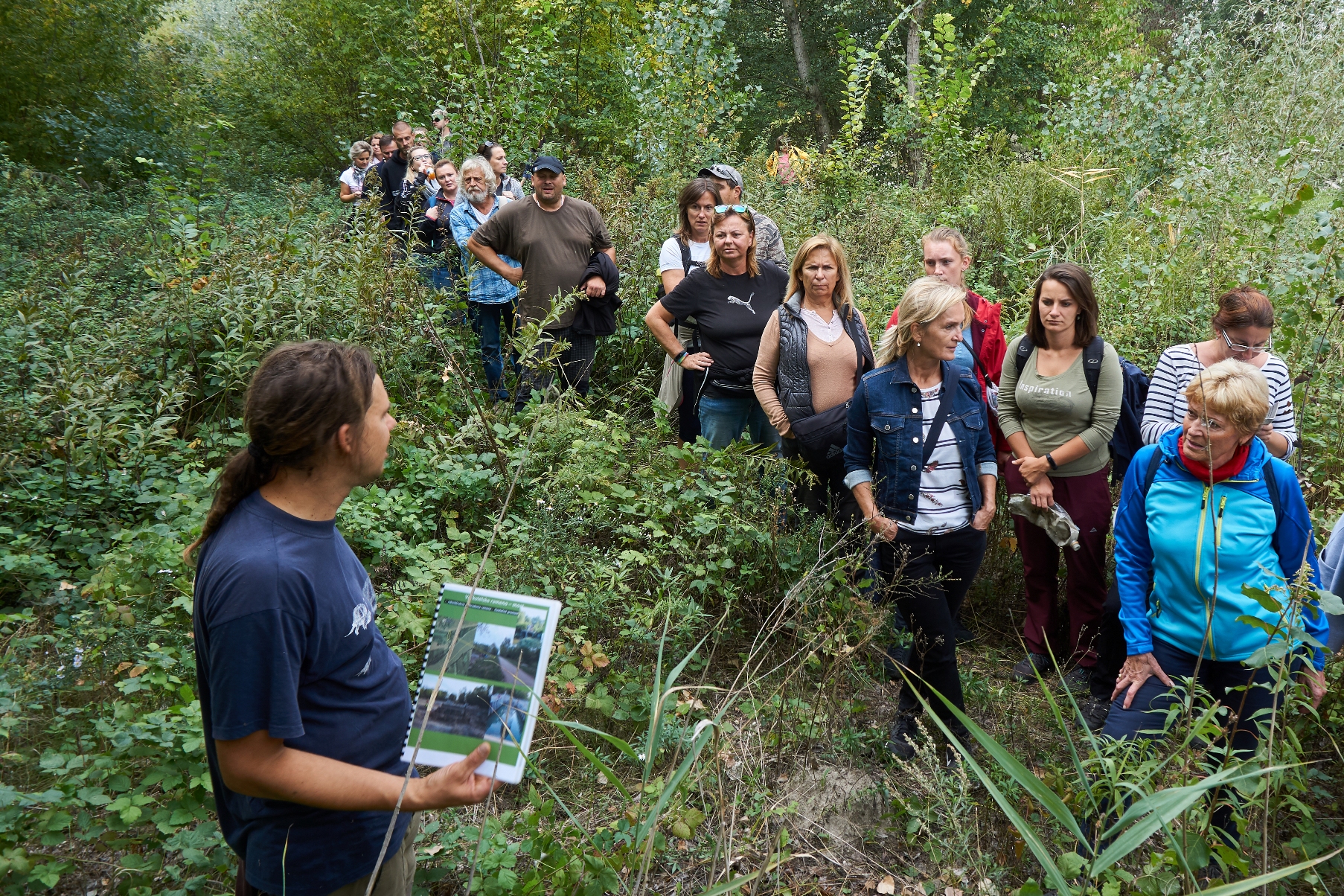
How are we doing with realisation of the activities – Excursion in Danube flood-plains 2019
On 24.-25. 9. 2019 we organized an excursion where we demonstrated restora-tion activities done during the project. Together with employees from Ministry of Environment, local offices and other „stakeholders“ we could see and also hear how the Danube floodplains
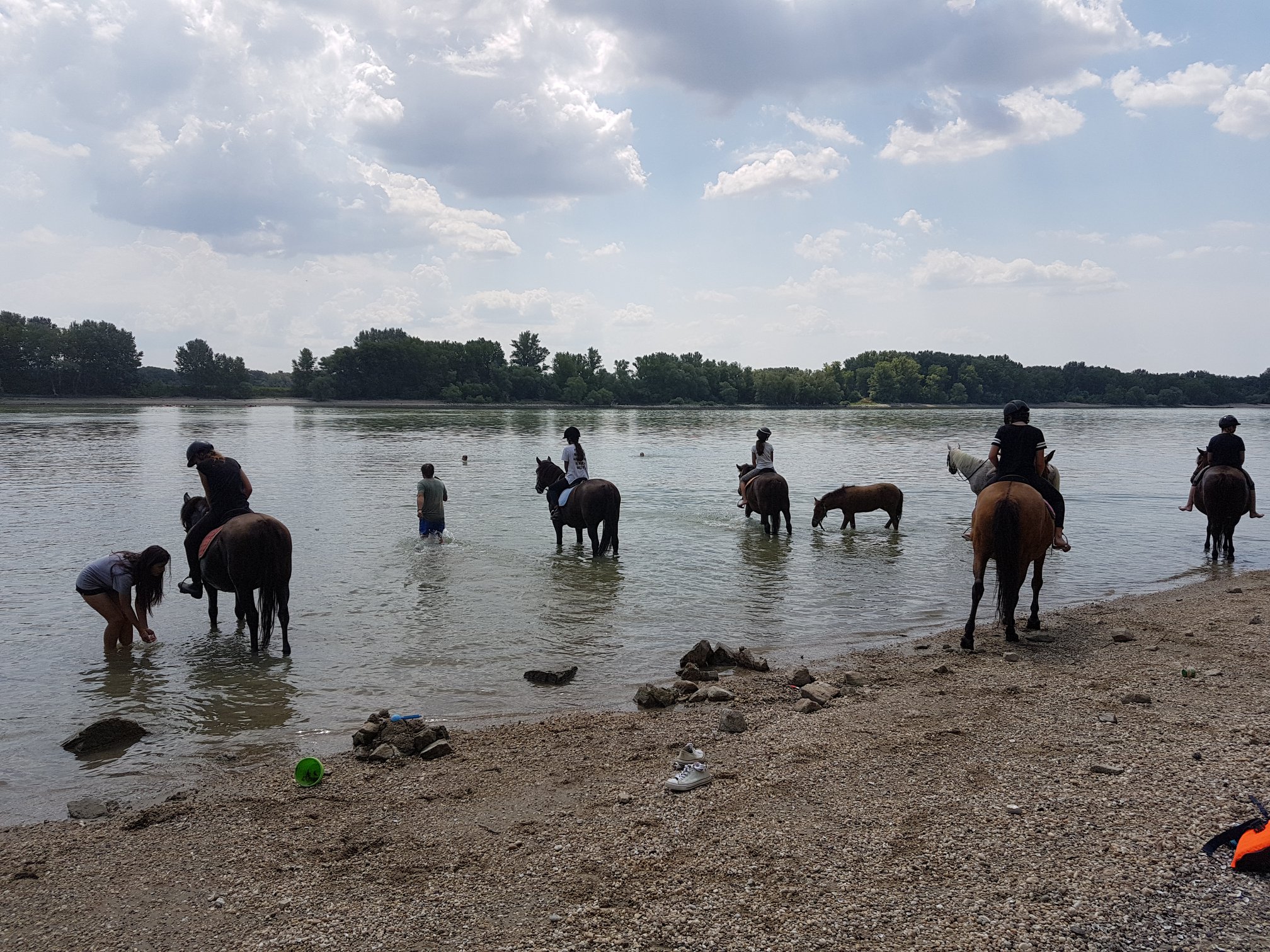
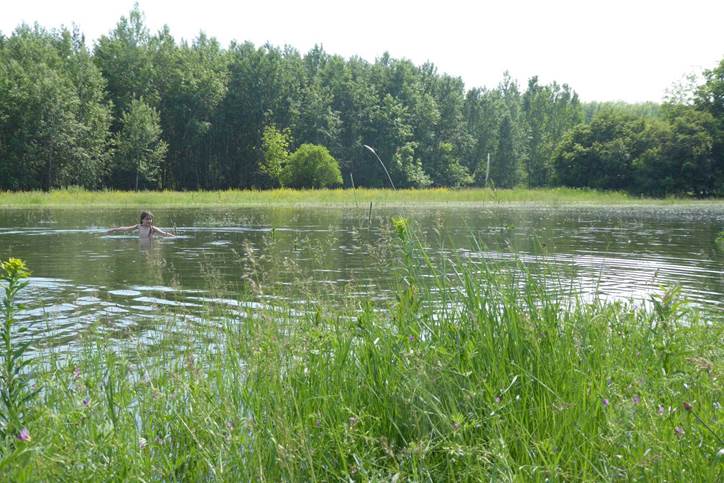
Thanks to the restored canal you may find the enliven wetlands on Veľkolélsky ostrov island
In spring 2018 we managed to restore the canal on Veľkolélsky ostrov island and to create periodical wetlands of about 41 hectares. In the past the canal was built to drain the island meadows quickly after floods. Now it is adjusted to be able to bring the water into the dry middle of the island…

May feast or EU Green Week 2019
During the European Green Week many partner events with environmental topic occur from 13th of April till 9th of June in the whole Europe. Inspired by this week we participated on the May feast in cooperation with the company Veolia and the municipality Bratislava – Karlova Ves.

Come and see the exhibition „Windows to nature“
In the rooms of reconstructed grainery at the Ecofarm Ostrov near the Veľkolélsky ostrov Island, you may get to know more about the disappearing beauties of Danube floodplains. You may see them as well as touch or even smell the natural beauties.

Invitation – Opening of the exhibition „Windows to Nature“
In the 10th of October 2018 you are kindly invited for the opening of the exhibition about dissapearing beauties of the floodplains. The exhibition shows the visitors of all ages the threatened nature of Danube floodplain habitats (river branches, wet meadows, gravel deposits, floodplain forests, wetlands and salt marshes) that Regional Association of Nature Conservation and Sustainable Development is more than 20 years trying to restore successfully.
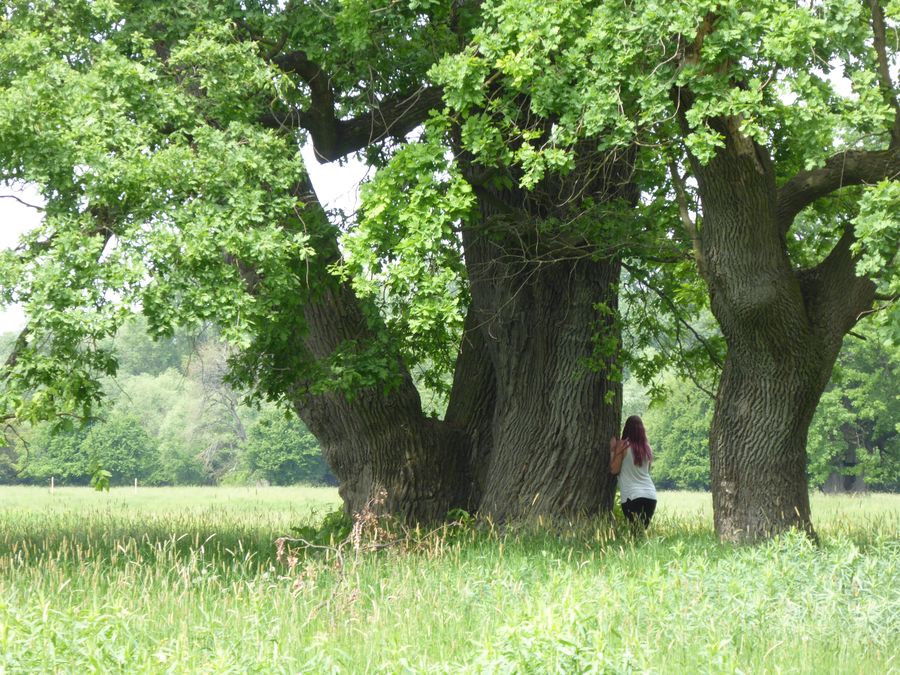
Identification of selected seed trees in Danube floodplains
Experts from National forest centre (NLC) have indetified significant trees – sources of genetic material of the native tree and shrub species (black and white poplar, pear tree, white willow, narrow-leafed ash, bird cherry…). The most valuable of the trees will be nominated in National register and National list of Forest reproductive material. In the…
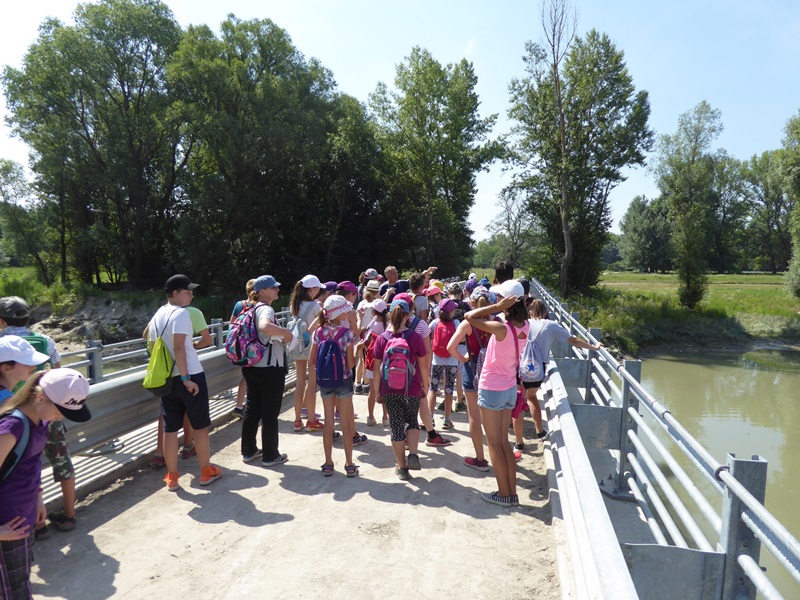
Excursions on Veľkolélsky ostrov Island for schools and public are popular
Chilren from schools, nurseries and wide public are invited to attend an excursion on Veľkolélsky ostrov Island. Part of the excursions is not only getting to know about natural beauties of the island and its´ unique habitat mosaic, but there is also a chance to ride horses (hucule), getting to know about different ways of…

The channel on the Veľkolélsky ostrov island has been reconstructed, new periodical wetlands have been created – the reason had been lack of the water in the summer time
Since February 2018 restoration works on the channel have been done in the middle of the Danube Island Veľký Lél. The channel takes the water from the river branch bringing it into the middle of the Island. Originally it was built by the locals in the last centuries and it had opposite purpose than it…

Summer camps in Veľký Lél – many children participated again this year
Again this year we organised 6 summer camps for children in the nature of Veľkolélsky ostrov Island during summer holidays (activity E.7). The sessions were full booked already in May which is the proof of a high interest in these camps among children. Apart of horse riding children also learned about native inhabitants of Danube nature…

Go Wild! Stay Cultured. International Nature and Culture Photo Contest within the European Year of Cultural Heritage – 2018
Nature and culture can both be on their own a fertile source of inspiration. What happens when they are interlinked? Today, we’re inviting you to join us on this journey of discovery by taking part in our photo contest. Share your photos showing your interpretation of culture and nature connections e.g. how culture is inspired…
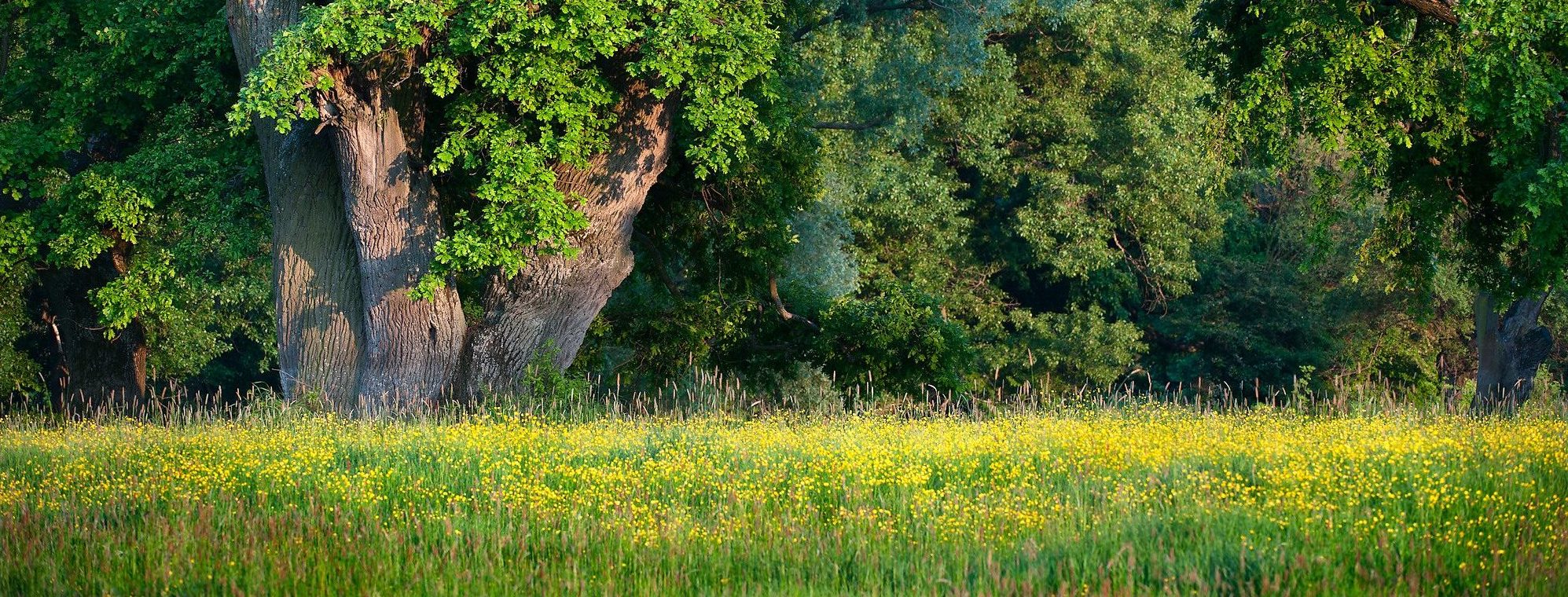
Story of the Veľkolélsky ostrov island – series in Radio Regina
Listen to another interesting facts about natural wealth of the Veľkolélsky ostrov island, about people living in the village Veľký Lél, pollard willows or the ecofarm keeping many kinds of domestic animals like horses or cows grazing on the island. Reportage in Radio Regina can be found here.
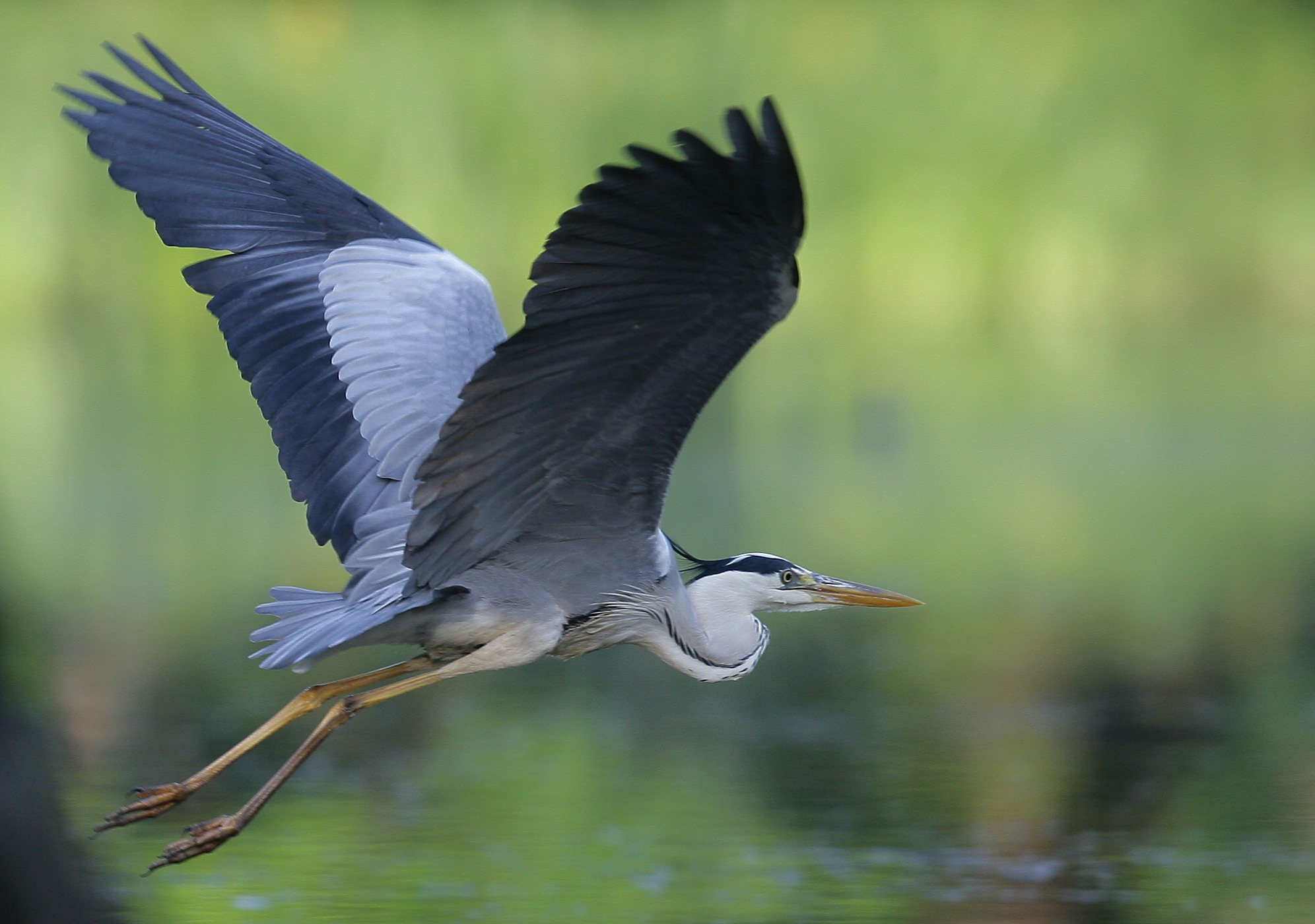
Press release – World Wetland Day, 2. 2. 2018
Second day of February belongs to the wetlands. Apart form the traditional feast of Candlemas we also remind World Wetland Day. The fact that this day of wetlands is mentioned also in calendar is the proof how important they are for maintainig stability of Earth´s ecosystem. However the wetlands are still one of the most…

Rebirth of wetlands near Vojka
After the restoration measurement in spring 2017 first possitive results are seen. In the area of former branch river system (project acitivity C.2) near the village Vojka, river arms as long as 800 meters were restored which created permanent wetlands on the area of 1 ha. Water which was brought to dry places using restoration…

Restoration of lowland meadows in Apál has started
Few weeks before Christmas we managed to install a barrier against motor vehicles which we placed on deserted field road in the edge of National Natural Reserve Apálsky ostrov near the Komárno town (SKUEV Dolnovážske luhy). It´s purpose is to block the access of motor vehicles into the reserve. Due to this measurement the road…
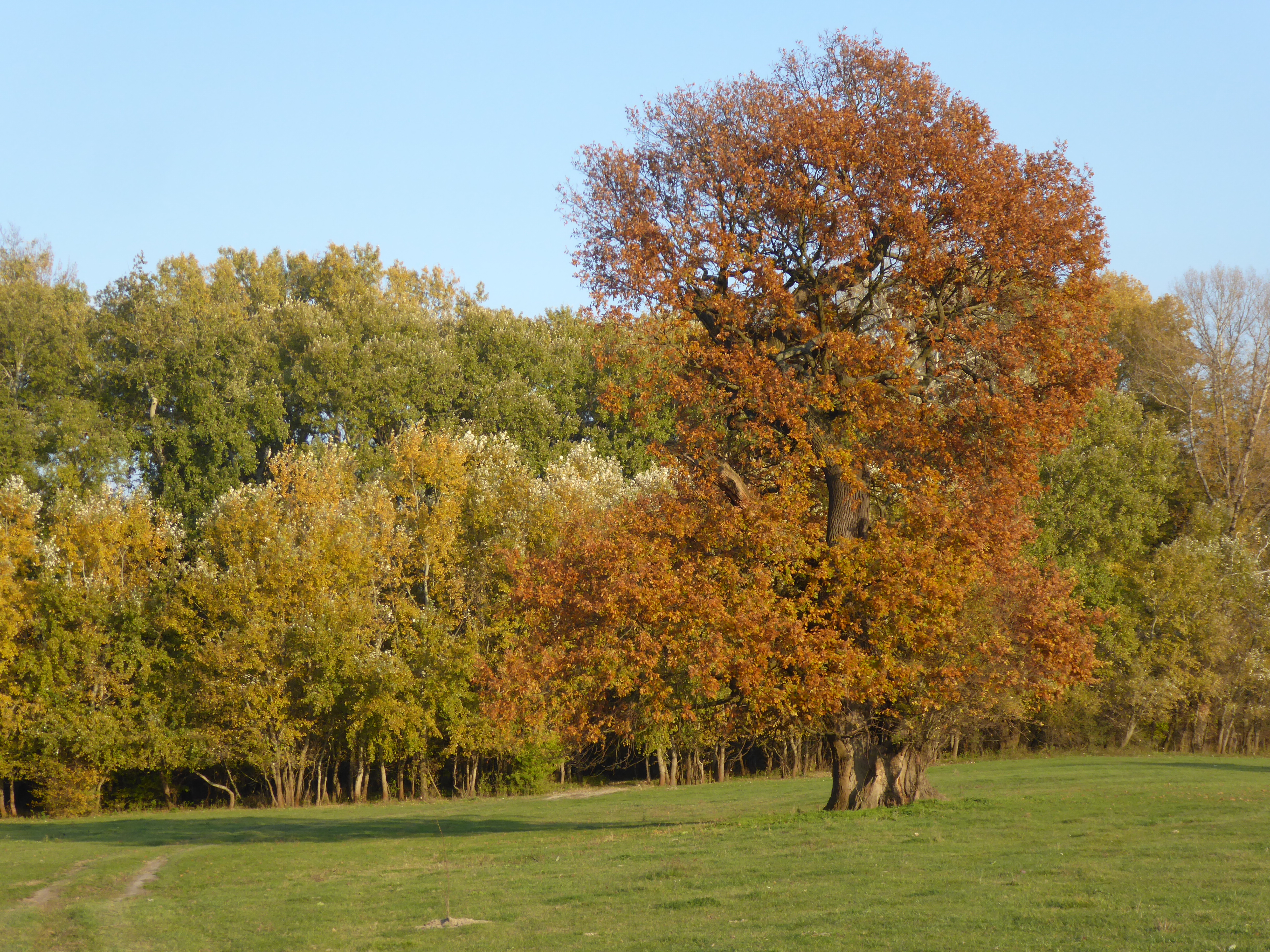
Pictures from the landscape in Veľkolélsky ostrov island – Radio Regina
Beauties and wealth of the island Veľký Lél were promoted in Radio Regina including the results of conservation actions and plans within the project LIFE Danube floodplains – Obrázky krajiny.

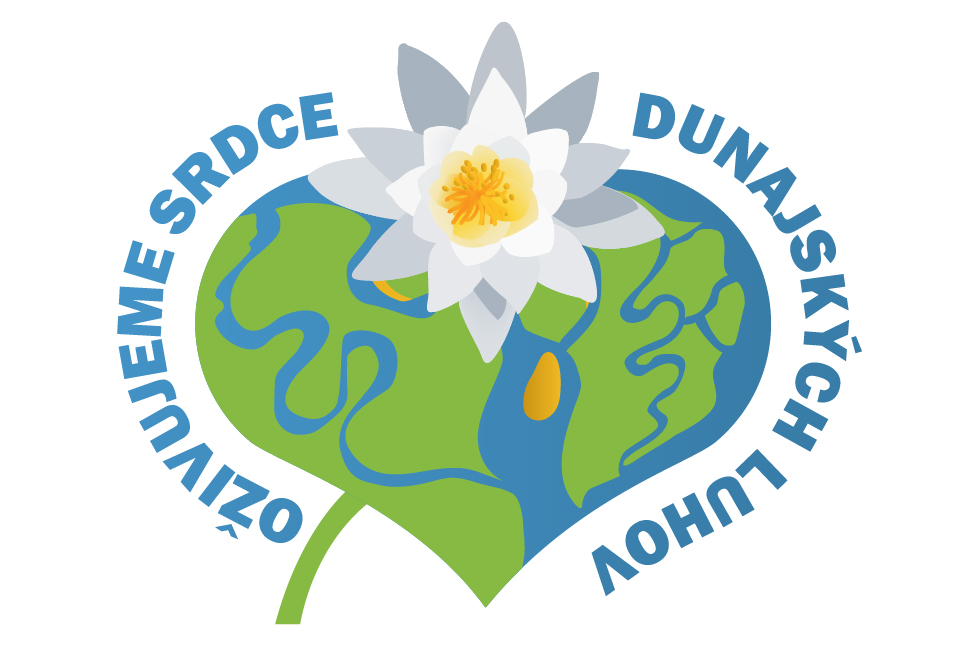
A new leaflet issued about protection of Danube floodplains
See our new leaflet issued in the project – “We restore the land of Danube floodplains” Ozivujeme_krajinu_dunajskych_luhov

Reportage about Danube floodplains in Radio Regina
28.10. 2017 – Silvia Halkova was a quest in the broadcast Panorama in Radio Regina. Listen a reportage about nature of Danube floodplains and their protection.

Grown seedlings of native trees
Partner of the project – NLC – has managed to grow several native tree species that will be planted soon in the forest – common oaks, barren pear and apple trees, lindens and black poplars. Altogether 4325 seedlings have been grown. In the same time “mother heads” of black and white poplars have been planted …

Dömös Day attracted mainly families with kids
A yearly venue named Dömös Day in the village Dömös took place the 9th of September with a rich program focused on nature and its conservation. It attracted mainly families with kids.

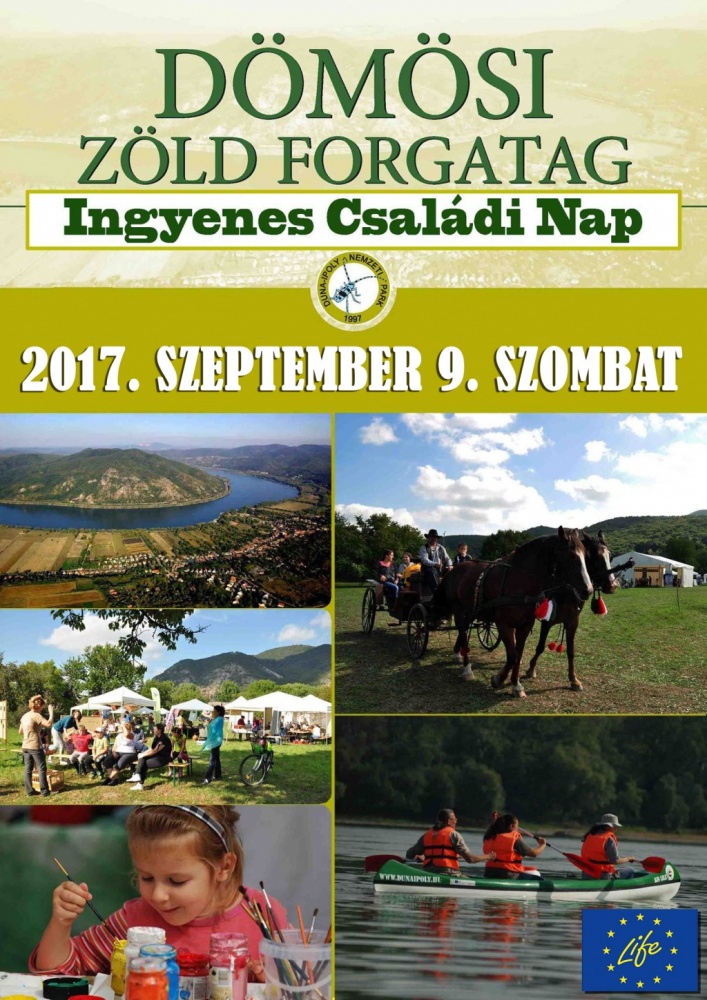
Invitation to the Green Day in Dömös, Hungary 9th of September
We are inviting all families to the annual event – Green Day in Dömös which will take place 9th of September 2017. You will enjoy many different activities for children and adults in the heart of beautiful nature in Danube floodplain forests.

Partner of the project Water research institute created a physical model of Danube river-branch system
In the rooms of hydraulic laboratory of the Water research institute (VÚVH) the employees created physical model of the part of the river-branch system. The model optimalise the main parameters, position and configuration of crosswise structures with the aim to achieve optimal conditions of the stream. Using this model and following field measurements and calculations…

Open Day of the project – 17. 05. 2017 – Waterworks museum, Bratislava
On the occasion of 25th anniversary of the program LIFE and 20th anniversary of the Regional Association For Nature Conservation And Sustainable Development an Open Day of the project Restoration and management of Danube floodplain habitats – LIFE14 NAT/SK/001306 took place on 17th of May 2017 from 8:30 till 21:00 in Waterworks museum in Bratislava.…

Restored wetlands in Danube floodplains near Dobrohošť
In May 2017 we managed to restore and create new wetlands in Danube floodplains near Dobrohošť. After digging a canal the water got into terrain depressions where ideal conditions for native floodplain species was created – e.g. amphibians and birds bound to open water bodies. Apart from amphibians a rare migratory birds appeared right after…

Planting of native woody species of floodplain forests in cadastral area of Bodíky
In April 2017 altogether 3375 nurslings of native woody species were planted in the forest in the cadastral area of Bodíky. The planting was realised on the localities after logging where natural reproduction of trees had not occured. We chose reforestation on these areas to prevent spreading of invasive woody species and to ensure species composition…

Monitoring of amphibians in the project area SCI Dunajské luhy
In the end of March 2017 a monitoring of amphibians started in different localities of restored wetlands. In several places an occurence of rare species was confirmed – The European fire-bellied toad (Bombina bombina) and The Danube crested newt (Triturus dobrogicus). According to the collected and evaluated data about amphibians we will be able to…

Grown seedlings of native trees
Partner of the project – NLC – has managed to grow several native tree species that will be planted soon in the forest – common oaks, barren pear and apple trees, lindens and black poplars. Altogether 4325 seedlings have been grown. In the same time “mother heads” of black and white poplars have been planted…
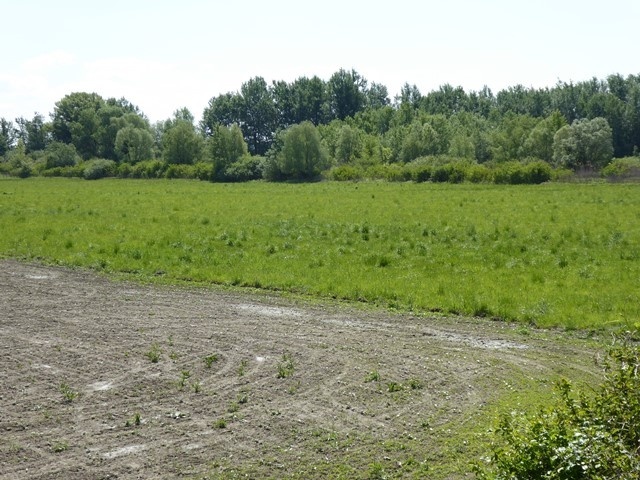
Restoration of grasslands in SKUEV Čiližské močiare
In the beginning of the spring 2017 in cooperation with local farmers we managed to restore 23 ha of grasslands in long-term wet fields in SKUEV0227, SKUEV1227 Čiližské močiare, in the cadastral area of Číčov. This way together we succesfully enlarged the area of grasslands in the project area. Restoring of grasslands is included in…

Cincér News Letter
Hungarian partner of the project Duna – Ipoly National Park Directorate prepared new No. of Cincér new letter, which is devoted to LIFE Danube floodplains project. Cincér news letter Here is the summary of the articles: The first article: The empire of the white tailed eagle. A report was made with Balázs Szelényi, the national species…
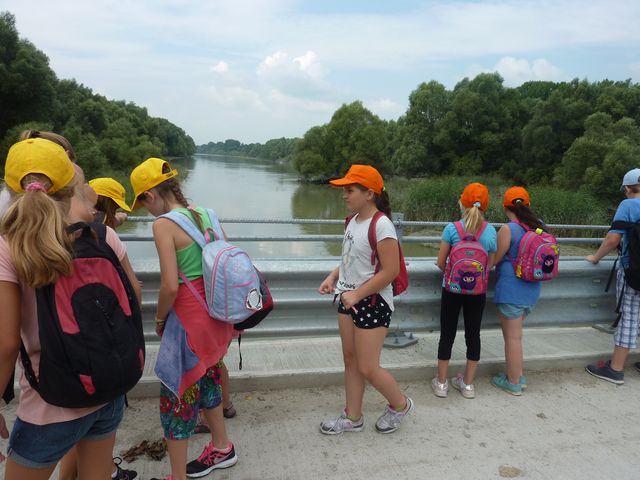
Children’s summer camps on Velky Lel locality in full swing!
From the second week of July children’s summer camps take place on the Velky Lel area (project action E.7).Children from closer and more distant surrounding towns and villages can get to know the Danube floodplain countryside and its exceptional beauty during one week course. They also can learn about importance of nature protection and the…
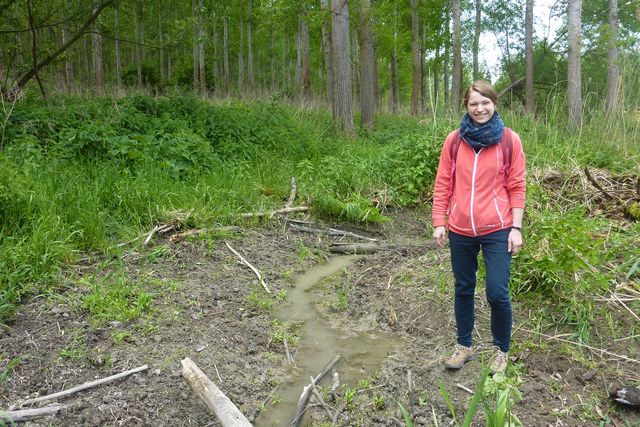
The first part of river branch system in Kralova luka is cleaned and revived
In the middle of May 2016 the first part of Kralova luka branch system was restored in Danube floodplains. With the help of excavator the fallen dead wood and river deposits have been excavated and the water intake from Danube was released. Before restoration there was only little brooklet in some parts of the river…
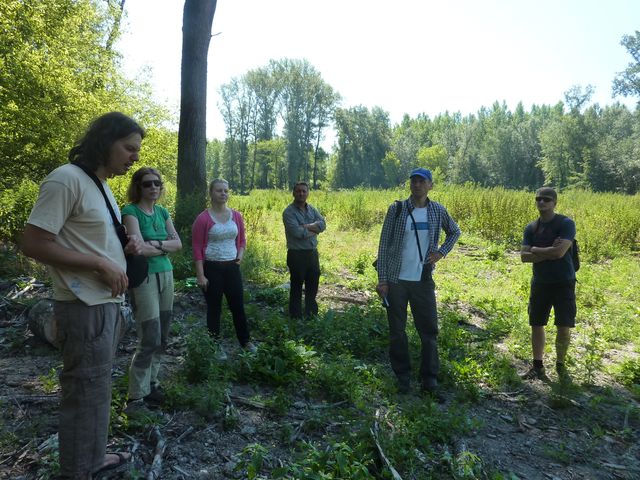
We are supporting and monitoring natural regeneration of clear-cuts in the floodplain forests.
As part of the monitoring mission of the European Commission, held on 22- 23/06/2016, we visited two project localities in Bodíky cadastral area. The BROZ organization has rented forest land in this area as part of the project LIFE Danube floodplains (project action B1). Former forest land owners have done clear cutting of non –…

First seedlings of native tree species are already growing in the biologic station of NLC
First seedlings of native tree species for the Danube floodplain forests, prepared for the project purpose, are already growing in a field station of the National Forestry Centre (NLC) in Gabcikovo since the spring of 2016. Workers have started to plant seedlings of trees, native to the Danube floodplains for the first time this spring…
Project title: Restoration and management of Danube floodplain habitats
Project sector: LIFE+, Nature and Biodiversity
Projektový acronym: LIFE Danube floodplains
Project code: LIFE14 NAT/SK/001306
Expected start date: 01/08/2015
Expected end date:31/01/2022
Total project budget : 5 999 420 € (60 % EU financial contribution – 3 599 651 € , Programme LIFE+)
Coordinating beneficiary:
Regional Association for Nature Conservation and Sustainable Development (Bratislavské regionálne ochranárske združenie) (Slovakia)
Project partners:
– Water management construction, state enterprize (Vodohospodárska Výstavba, š.p.) (Slovakia)
– Water research institute (Výskumný ústav vodného hospodárstva) (Slovakia)
– NAtional Forest Centre (Národné lesnícke centrum) (Slovakia)
– Duna – Ipoly National Park Directorate (Hungary)
 Main results of the project are – reconstruction or technical objects in a branch system , like small barriers, , culverts, inlets, outlets, etc. All measures will be prepared in close cooperation with project partners – Water research institute and Water management construction, state enterprise, and other stakeholders (for example SVP – State water management company)
Main results of the project are – reconstruction or technical objects in a branch system , like small barriers, , culverts, inlets, outlets, etc. All measures will be prepared in close cooperation with project partners – Water research institute and Water management construction, state enterprise, and other stakeholders (for example SVP – State water management company)
Expected results:
– Minimum 5 technical facilities in branches will be reconstructed or built, so that to achieve the greatest environmental benefit (enough water and suitable water regime).
– Water regime will be improved on 1850 ha in the river Danube branch system.
– At least two insulated side branches will be reconnected to the Danube.
– Branches will be restored to its full length of 4500 m (various barriers – deposits, residue extraction, etc., which prevent the flow of water will be removed).
– At least 57,500 native trees will be planted.
– River branches and wetlands ,revitalized by water, will be able to fix CO2 from the atmosphere, thus reducing the impacts of climate change (return of the investment thus restored wetlands, is, according to expert estimates, 100 times higher comparing to common mitigation measures focused to reduce the impact of climate change).
Conservation status of rare species of plants, animals and habitats of floodplain forests and wetlands in the project area (belonging to the Natura 2000 network), will be improved, also flood protection will be improved.
Such a large project has not been implemented in Slovakia yet, and it will serve as a model for other similar projects in the future.
Main project objectives:
The project objective is to restore the key natural habitats of Danube floodplains and to introduce sound sustainable management. Habitat restoration will be achieved by improvement of water regime in the vast river branch system and by direct interventions to secure favourable conservation status of targeted habitats.
Specific objectives are:
- to optimize water level and distribution of water within the Danube river branch system and in Danube floodplains;
- to restore water regime of selected disturbed localities;
- to restore targeted habitat types and to improve their conservation status
- to increase biodiversity of floodplain forest habitats, production potential and ecosystem services of forest management;
- to improve the conservation status of the last remaining fragments of non-forest habitats within project site, especially alluvial meadows and to set-up their sustainable regular management;
- to support practical implementation of the EU Habitats Directive and NATURA 2000 network
- to raise awareness on importance of floodplains restoration and to disseminate knowledge for replication and transfer of results and of best practices.
On the Slovakian part the project focuses on the vast area of Danubiam river branches in the following areas: Dobrohošť, Sap, Kľúčovské branch, Číčovské branch and Čilizký stream and the wetlands in the aluviums of Váh, Ipeľ and Danube rivers. In Hungrary the project focuses on the National Park Danube-Ipeľ.
Project area map
Čiližské močiare SKUEV0227, SKUEV1227

Dunajské luhy SKUEV0090

Dunaj SKUEV0393

Velkolélsky ostrov SKUEV0183

Dolnovážske luhy SKUEV0092

Kľúčovské rameno SKUEV0293 a SKUEV1293
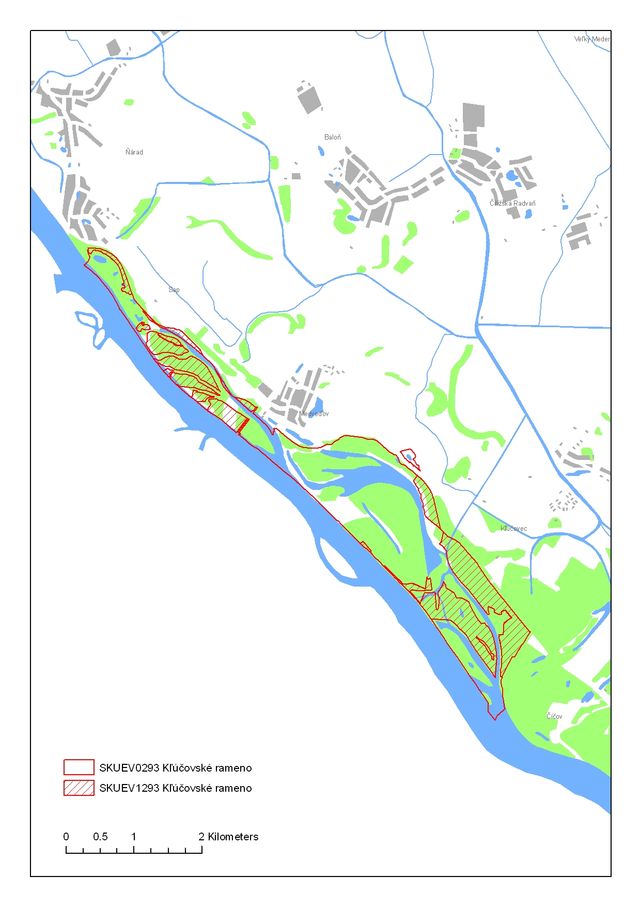
Klátovské rameno SKUEV0075
Číčovské luhy SKUEV0182 a SKUEV1182
Háros ostrov HUDI20034
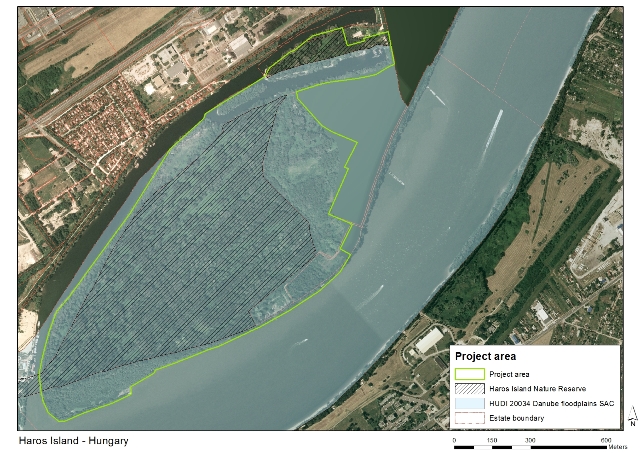
Szentendre Island HUDI20034
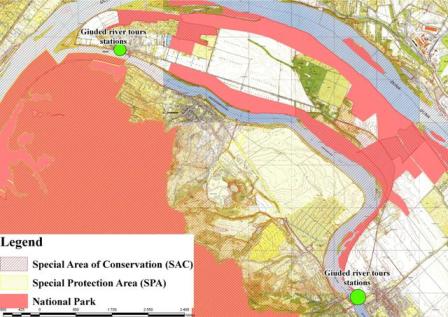
The project activities are defined according to LIFE requirements. The outcomes will be updated regularly on the project website.
A. Preparatory actions, elaboration of management plans and/or of action plans
A.1: Hydrological model on flow capacity and longitudinal continuity of Danube river branch system (VUVH)
Expected results: Final proposal of restoration measures including specification of basic parameters.
A.2: Expert study on restoration of river branches lateral connectivity and wetlands water regime (VUVH)
Elaboration of final expert study that will include all restoration measures including their basic parameters.
A.3: Technical documentation (VVB)
Technical set of project documentation elaborated for realisation of conservation actions C.1 and C.2. Documentation for obtaining construction permit elaborated, submitted to responsible authorities and approved. All necessary permissions and agreements according to Act No. 543/2002 on Nature and Landscape Protection as amended provided.
A.4: Identification of the sources of autochthonous gene pool, reproduction of these species and elaboration of activities draft serving on forest ecosystems conservation (NLC, BROZ, DINPD)
Established a gene pool of 200 DNA-verified Black poplar genotypes with varietal identity and GIS records on Hungarian side.
Individual trees/ approved stands will be indentified within Slovak part of project site as source of reproduction material.
Number of individual trees or areas with approved stands will be nominated to the National Register and National list LRM.
The expert study proposed concrete restoration measures to improve conservation status of targeted forest habitats will be elaborated.
A.5: Expert study on lowland meadows and non-forest habitats restoration (BROZ)
An expert study on restoration of lowland meadows and non-forest habitats elaborated. At least 2 public discussions with stakeholders and/or experts on the study organized.
B. Purchase/lease of land and/or compensation payments for use rights
B.1: Purchase / lease of land (BROZ)
Purchased or leased land in order restoration activities could be preformed.
C. Concrete conservation actions
C.1: Restoration of the flow capacity and longitudinal continuity of Danube branch system (BROZ, VVB)
Action will be implemented in SCI Dunajské luhy. Minimum of 5 technical objects will be created or reconstructed on the selected locations at the existing fixed weirs, where maximal ecological impacts can be achieved for largest sections of the river branch system. Water regime of the area of 1850 ha improved. Updated “Operating manual” with new technical measures and maximising ecological benefits of the restored longitudinal continuity of the river branch system. Conservation status of the targeted species will be improved and their populations will be enhanced.
As negotiations with the competent authorities to amend the Operating manual were not successful, on 21. April 2020, a petition entitled “FOR WATER FOR THE LIFE OF THE INLAND DANUBE DELTA” was launched, signed by 11,603 supporters. The petition was submitted to the Minister of the Environment on 14. August 2020. Negotiations with the competent authorities on a change in the Operating manual will follow.
C.2: Restoration of river branches lateral connectivity and water regime of wetlands (VVB, BROZ)
Two major river branches will be restored in their whole length. This includes restoration of their water regime a river dynamics. It is expected that minimum of 4 500 m of river branches will be re-connected with long-term perspective for sustainable natural restoration of breeding habitats for target species. Migration barriers for fish and other water organisms will be removed. Due to restricted access to some places after restoration also significant decrease of human disturbance will be achieved on 135 ha.Four wetlands will be restored with the total area expected of 37 ha.
Conservation status of the targeted species will be improved and their populations will be enhanced.
C.3: Establishment of the biological base and production of planting material of the native tree species (NLC, DINPD)
Established archive of forest tree genetic resources of the Danube floodplain in Slovakia. Within the repository of genetic resources of NLC, important species will be represented in a minimum of 20 pieces of each specimen. Together 45,000 pieces of seedlings for reforestation needs will be grown during the project implementation. A gene pool will be established by DINPD on 3.8 ha area. The number of genotypes in Hungary preserved in the tree-shaped collection is at least 400.
C.4: Restoration of autochthonous tree species composition and increase of the forest stands biodiversity (BROZ, DINPD)
Planting of 57 500 pcs. of native tree species on the total area of 45 ha. 45 000 pcs of trees planted within Slovak part of project site. Invasive tree and plant species removed on the area of 40 ha o Slovak project side. After planting care of young trees realized. In Hungary on Háros Island: Clearance of Negundo aceroides, Fallopia japonica, Solidago sp. from at least 7 hectares.Restoration of the alluvial forest (i.e. several smaller spots) on a total area of minimum 3.5 hectares. Construction of protective game wire fence in 1,550 m total length.Waste clean-up and removal of ammunition: 5 ha The removal of ammunition is necessary to provide for the safety of workers and researchers. The 560 m long concrete fence that runs in the middle of the alluvial forest, will be removed. By cutting its dikes in two places we assure better and more frequent flooding of the enclosed area.
C.5: Restoration of lowland meadows and non-forest habitats (BROZ)
Overall 84 ha of grasslands restored and their regular management initiated. At least 150 pollard willows be restored. Overall 200 pcs of new pollard willows will be planted.
D. Monitoring of the impact of the project actions (obligatory)
D.1: Hydrological and hydrobiological monitoring (VUVH
Compilation of database of hydrological, morphological, climatological, biological and chemical data for the state before and after implementation of measures. Assessment of present abiotic and biotic state of the branch systems in the project areas. Assessment of effectiveness of proposed measures.
D.2: Monitoring of biota (BROZ, DINPD)
Database will be created with estimated several thousands of records. At the end of the project final monitoring report with the results will be provided to give feedback to the implementation of the concrete conservation actions. Scientific information about selected groups of biota from the project site will be provided via annual reports. Final report will compare situation of selected taxa before onset of C actions and post-restoration situation.
D.3: Monitoring of socio-economic impacts of the project (BROZ)
One socio- economic report will be completed in a final phases to give feedback to the implementation of the concrete conservation actions.
D.4: Monitoring of the impact on the ecosystem functions (BROZ)
The ecosystem functions will be characterized in the beginning of the project, after previous-monitoring of project sites and all relevant monitoring (of biota, hydrobiological monitoring etc.). From all possibilities, the relevant ecosystem functions for each project site will be selected and those will be subsequently monitored.
Also the relevant ecosystem functions for specific habitats will be selected and monitored. The statement of the ecosystem in a relation to ecosystem functions will be measured in the beginning and in the end of the project.
D.5: Monitoring of dissemination of activities (BROZ)
The monitored results will be processed into excel tables and graphics, where relevant feedback progress will be clear. The percentage of questionnaire’s and quizes’s successful responses will be measured at the beginning and in the end of activities. The results and graphics will be delivered with final report, because the monitoring activities will last till the end of the project.
E. Public awareness and dissemination of results (obligatory)
E.1: Project website (BROZ)
The project web page developed, maintained and promoted during the whole project period in three languages – EN, SK, HU.
E.2: Meetings with stakeholders and study visits (BROZ)
Constant communication with stakeholders, at least 24 meetings with stakeholders will be organized. In average each meeting attended by 5 representatives, 2 two-day study visits for cca. 30 people each will be organized.
E.3: Publication of information, educational and promotional materials (BROZ, NLC, DINPD)
Following information, educational and promotion materials will be produced and disseminated: leaflets, expert brochures – 3 types/ series together, 7 500 copies publication ‘Discover Duna-Ipoly Natural Park’, Cincer newspaper, DINPD promotional materials (textile bags, pens, register books, calendar, mugs), stickers, calendar, magnets, T-shirts, cups, pens, visitors centre facility improvement.
E.4: Excursions / tours for students, teachers and public, guid trainings (BROZ, DINPD)
10 guided excursions for students (together 200 people expected), and 5 guided excursions for the public (together 50 people expected). Two 5-days trainings of guides will take place. DINPD. Five 1-day demonstration tours for teachers will take place. The number of new guides trained during the project: 20 people. The number of guides receiving further training during the project: 20 people. The number of people participating on guided tours during the project: 4000 people.
E.5: Promotion of project on conferences and in media (BROZ, VUVH, NLC)
Project presented on at least 13 conferences, 4 press conferences organized, 5 press releases distributed, 30 articles covering the project published, 5 radio interviews broadcasted, 10 TV shots broadcasted.
E.6: Presentations for school and public, interactive educational expositions (BROZ, DINPD)
10 presentations for students (together 200 people expected), 5 presentations for the public (together 100 people expected).The visit of stabile exhibition by 10 institutions/ organizations/ schools (Minimum of 3 500 visitors of stabile exhibition) – BROZ
Established exhibition by DINPD (overall 5 000 visitors during project duration).
E.7: Camping in the nature (BROZ)
Twenty 5-days camps for overall 240 children will take place.
E.8: Final conference (BROZ)
At least 40 participants from Slovakia and neighbouring countries attending the event. At least 5 media representatives attending press conference. Project’s results disseminated through at least 5 media outputs (e.g. online and printed articles, TV and radio interviews).
E.9: Networking with other projects and institutions (BROZ)
Six three day visits for 3-5 project personnel or key stakeholders will be organized and implemented. These will lead to visit several places where management of natural areas meets with similar issues and where interested parties can discuss e.g. sheep grazing management, natural tree species planting, use of natural mixtures seeds, and restoration of grasslands, wetlands. Such study visits will lead to similar projects in Czech Republic, Austria, Italy, Hungary or Poland.
E.10: Organization of family day (DINPD)
6 family days, expected 500 guests per event, i.e. a total of 3000 people in six years.
E.11: Notice boards (BROZ)
Installation of 10 notice boards. Installation of small notice boards according need of actions implemented in field.
E.12: Layman report (BROZ)
Layman’s report produced.
F. Project management and monitoring of project progress (obligatory)
F.1: Project management (BROZ)
The sound implementation of the project ensured. Project staff employed. First progress report, three other progress reports, midterm report and final report submitted.
F.2: Project bookkeeping and financial management (BROZ, DINPD)
Transparent recording of project finances (expenditures + incomes).
F.3. Project auditing (BROZ)
Audit reports confirming transparent and accurate recording of project finances (expenditures + incomes). Final report on the project audit will be enclosed to the final technical report.
F.4: After-LIFE project conservation plan (BROZ)
An After-LIFE conservation plan written after the project will finished will include the maintenance activities and responsible organisations.
Project Results by February 22, 2024:
- Preparatory actions
A.1: Study on flow capacity and longitudinal continuity of Danube branch system, including a hydrodynamic model (WRI)
A physical model of a fraction of the Danube branch system was built in the WRI technical laboratories. All field measurements necessary to create a digital model of the branch system were executed, the calculations were completed and the digital model is in working order and capable to be used in selecting the suitable measures for the study.
The study containing suggestions of restoration measures within C1 Activity is ready.
A.2: Expert study on restoration of lateral connectivity between Danube branches and the Danube main stream and water regime improvement in wetlands (WRI)
All field monitorings necessary in order to set-up 1D and 2D hydrodynamic models, as well as model simulations of different water levels scenarios have been carried out.
The study containing suggestions of restoration measures within C2 Activity is ready.
A.3: Technical documentation (VVB)
Technical documentation for the partial branch restoration in Kráľovská lúka was completed (2015).
Technical documentation for restorations planned in C1 & C2 Activities is in progress.
For C1 Activity: Documentation for restoration of water flow in side arms near Vojčianske rameno branch – after the weir A, was completed in March 2020. Project documentation for reconstruction of the weir D2a on the D line of the Danube branch system was completed in spring 2022.
Related to C2 Activity: Works were carried out in order to secure the missing dampers needed to completely block off the B line of the branch system. This Activity will be executed by contractors. In 05 – 06/2021, the request and conditions were specified in order to procure the technical documentation, production and supply of 2 missing dampers.
Technical documentation was elaborated in order to suggest the reconstruction of Bst. weir, E3 weir, complex restoration of hydrological regimen of Kráľovská lúka locality and reconstruction of L4 branch of Veľkolélske side arm.
All necessary technical documentations are ready and this activity is completed.
A.4: Identification of autochthonous gene pool sources, species reproduction; processing the activity proposal aimed on forest ecosystems conservation (NFC, BROZ, DINPD)
Gene pool consisting of 200 DNA genotypes of black poplars in the Hungarian part has been already completed (DINPD).
Identification of autochthonous gene pool sources on the Slovak part has been completed. More than 150 individual trees have been identified near Danube, e.g. black poplars, willows (crack willow), narrow-leafed ashes, small-leaved limes, apple trees, pear trees, mulberry trees, common oaks. The data have been processed and included in a report, seeds and other reproductive material has been collected, and used to grow seedlings in the NFC field station.
The Activity is completed.
A.5: Expert study on lowland meadows and non-forest habitats restoration (BROZ)
The study on lowland meadows and non-forest habitats restoration was completed in 2016. At the moment, restoration works based on the study are being carried out in lowland meadows – under C5 Activity.
The Activity is completed.
- Land purchase/Long-term rental
B.1: Land purchase/rental (BROZ)
The plots have been rented or purchased for the purposes of native alluvial ecosystems conservation under C Activities, including water bodies, grasslands, forest plots, arable land, and other.
Land purchased as of today – 69.56 ha.
Land rented as of today – 351.67 ha.
- Specific conservation activities
C.1: Restoration of flow capacity and longitudinal continuity of Danube branch system (BROZ, VVB)
At the beginning, it was necessary to modify the Operation Manual valid in the Gabčíkovo hydroelectric dam. The changes aim to get more water into the Danube branch system and to allow for regular floods, as they used to happen prior to the construction of the hydroelectric dam.
On April 21, 2022, a petition “ZA VODU PRE ŽIVOT VNÚTROZEMSKEJ DELTY DUNAJA” was published. It got 11,603 signatures. On August 14, 2020, the petition was submitted to the Minister of Environment, followed by negotiations on the Operation Manual modifications with respective authorities.
On May 15 – 17, 2020, one simulated flood was carried out, with maximum flow rate of 90 m3/s.
In 2021, a spring simulated flood was done in April (34 days), a summer flood was done in May (15 days).
In 2022, simulated floods in spring and summer were merged into one, during May and June (41 days), with maximum flow rate of 90 m3/s.
For a long time the planned flow rate of 120 m3/s have not been achieved, mainly due to security concerns – There are buildings in the subject area, many of them built illegally. Therefore, the State Secretary at Ministry of Environment of the SR began to address the issue.
In 2022, negotiations on new Operation Manual Vol. XII were open. They intended to achieve the desired flow rate during the simulated floods.
WRI experts installed remote probes on all weirs in the branch system (2022) to monitor the water levels during the flood and to be able to keep the weirs open for transit (online access: https://app.meratch.com/w/vuvh/river-system). Moreover, they created an app that calculates the water levels based on the flow rate on inputs and outlets (number of openings on a weir).
In 2023 spring simulated flood was carried out between 26.3.-28.4. and the summer one in a period of 15.7.-1.8., while in summer the higher flow of 120 m3/s was tested for the first time.
Between August 2023 and January 2024 the lower Vojčianske side arm was restored – water regime was renewed together on 3,7 km. On two weirs, the insufficient tube culverts were replaced by frame culverts of higher capacity, narrow sections of side arm were expanded, a ford was constructed in order to access newly created island and locally small pits were dredged on the bottom of the branch for wintering of fish.
At the end of 2023 weirs D2a and E3 were reconstructed in order to improve flow capacity as well as migration potential for fish.
Weir Bst. will be reconstructed in spring 2024, and so will be the outlet object of material pit near Šulianske lake.
C.2: Restoration of lateral connectivity of the branches and water regime in wetlands (BROZ, VVB)
May 2016 – Kráľovská Lúka branch near Baka village – one section done, length approx. 190 m – the next part will follow.
In May/April 2017 – wetlands in branch system near Dobrohošť and Vojka nad Dunajom villages were restored and expanded with the following results: the dry branch was restored in total length of 430 m; the water flow was restored and the time when 440 m of the branch is filled with water, was extended (previously 6 months, now all year round); 0,95 ha of periodic wetlands were restored (Dobrohošť, Kyselica), flooding potential in 16 ha of hardwood and softwood alluvial forests was restored (Dobrohošť, Kyselica).
In February/March 2018, wetlands on Veľkolélsky ostrov island were restored with the following results: 2 deep permanent wetlands with total area of 0,6 ha were created. One larger periodic wetland and 6 smaller periodic wetlands were created on the island. If the Danube flow rate is above 3000 m3/s, these are filled with water from a canal. The total area of the wetlands is 40.89 ha (the map of floods).
Other restoration works are being prepared in collaboration with the VVB.
Photographs can be found in an article.
Until today, 2010 m of branches have been restored.
64.09 ha of wetlands have been restored (5 permanent wetlands with total area of 1.1 ha, and 7 periodic wetlands with total area of 62.99 ha).
In December 2023 the construction site of Kráľovská lúka was hended out to the contractor in order to restore the water regime of an old river branch.
C.3: Preparation of planting material and founding of the biological station (NFC, DINPD)
A gene pool registry of native forest tree species was created in Dunajské luhy, in the NFC field station.
The following numbers of tree seedlings were grown in order to be planted on the forest plots:
| Autumn 2016 | 800 ind. Populus nigra, 450 ind. Tilia cordata – 1,250 individuals in total |
| Autumn 2017 | 70 ind. Quercus robur, 3,000 ind. Populus nigra, 200 ind. Malus silvestris, 200 ind. Pyrus communis, 350 ind. Tilia cordata – 3,820 individuals in total |
| Autumn 2018 | 800 ind. Populus alba, 4,500 ind. Populus nigra, 400 ind. Ulmus laevis, 300 ind. Malus silvestris, 1,000 ind. Quercus robur, 120 ind. Tilia cordata – 7,120 individuals in total |
| Autumn 2019 | 100 ind. Populus alba, 1,800 ind. Populus nigra, 1,100 ind. Ulmus laevis, 225 ind. Malus silvestris, 2,000 ind. Quercus robur, 100 ind. Fraxinus excelsior, 225 ind. Pyrus pyraster – 5,550 individuals in total |
| Autumn 2020 | 9,150 ind. Populus alba, 9,400 ind. Populus nigra, 4,000 ind. Quercus robur, 850 ind. Salix alba, 350 ind. Malus sylvestris, 75 ind. Pyrus pyraster, 75 ind. bird cherry Padus avium, 15 ind. hawthorn Crataegus sp. – 23,915 individuals in total |
| Autumn 2021 | 13,500 ind. Populus nigra, 5,500 ind. Populus alba, 1,300 ind. Salix alba, 48 ind. Quercus robur, 40 ind. crab apple tree, 297 ind. Crataegus monogyna, 180 ind. Alnus glutinosa, 20 ind. Pyrus communis – 20,885 individuals in total |
| Autumn 2022 and 2023 | 1600 ind. Populus nigra, 1350 ind. Populus alba, 600 ind. Salix alba, 500 ind. Quercus robur, 100 ind. Fraxinus excelsior,100 ind. Ulmus laevis, 300 ind. Padus avium, 200 ind. Pyrus communis, 100 ind. Malus silvestris – 4850 ind. in total |
| Total | 67 390 ind. |
DINPD: They planted 1 ha of Populus nigra in Dejtár village (HU). An official Populus nigra nursery was established. In March 2021, 375 cuttings of 43 different certified Populus nigra genotypes from the Gemenc State Forestry were planted in Dejtár village. In March 2021, 2,000 Populus nigra cuttings of more than 100 different genotypes of pre-selected mother trees were collected, and placed in the official tree nursery of Ipoly Erdő State Forestry, followed by 470 more in 2022. At the moment, the gene collection is under maintenance. In December 2020, 6,000 native trees were planted on 2.1 ha, on the Rácalmás island (HU). Every other row was planted in. The remaining rows were filled with Populus nigra in the spring – 3,500 cuttings of 49 different certified genotypes from the Gemenc State Forestry, in Tolna (HU) were planted in March 2021. Currently, the entire area of 3.6 ha is completely planted in. Native tree species typical for 91E0 habitat take up half of the area, the other half is filled with 86 different genotypes of Populus nigra.
Trees planted in 2021 by DINPI were officially certified. Rooting in 2022 was not successful. In March 2023, 648 individuals of 32 genotypes purchased from Gemenc Forestry were planted in Dejtár. DINPI collected Populus nigra cuttings from determined donor trees. Cuttings were transmitted to a nursery. 791 shoots from 64 individual genotypes secured 1916 cuttings out of them. Rooting was successful, as 917 individuals of 57 genotypes are still alive. In Rácálmás extra plantation was necessary (12/2022: 1000 pcs of Acer platanoides, 1000 pcs of Ulmus leavis; 03/2023: 3000 pcs of 34 genotypes of Black poplar) in order to fully finish the action.
C.4: Forest restoration by planting autochthonous tree species & Biodiversity improvements in forest growths (BROZ, DINPD)
The total number of seedlings planted in Slovakia under this Activity is 59,400 individuals of different tree species (black poplars, white poplars, small-leaved limes, common oaks, crab apple trees, European white elms, white willows, hawthorns, bird cherries).
After planting care is carried out regularly on 39 ha.
Invasive plants were removed from the total area of 113.67 ha.
DINPD:
Negundo aceroides, Fallopia japonica, Solidago sp. are being removed from 10 ha area on the Háros island in Hungary. In January 2021 and subsequently in November 2023, 534.28 t of waste was removed for the Háros island. On the cleaned locality seedlings were planted.
Invasive plant Fallopia x bohemica is still being removed. After planting care is being carried out. A new 0.1 ha plantation was established on Hunyadi island in Hungary. It consists of Hungarian ashes Fraxinus angustifolia ssp. pannonica, European white elms Ulmus laevis, and common oaks Quercus robur. In total, more than 14,500 trees were planted.
DINPD provides the after-planting care. It includes application of nature-friendly animal repellents instead of fences, which prevents the trees from being gnawed on.
C.5: Restoration of lowland meadows and non-forest habitats (BROZ)
This Activity started in March 2017. Approx. 23 ha of water-soaked fields in SAC Čiližské močiare near Kľúčovec village were grassed over in collaboration with the local agricultural cooperative.
In December 2017, restoration works were carried out on lowland meadows in NNR Apálsky ostrov in SAC Dolnovážske luhy near Komárno: On November 24, 2017, a gate arm to prevent unauthorized vehicles from entering was installed. Afterwards, the meadow was partially mulched – approx. 3.8 ha (advance growths removed). The works continued in August 2018, including further mulching. In 2019, 5.5 ha of meadows were mowed.
In spring 2018, 63 willows were planted on Veľkolélsky ostrov island, along both banks of a periodically flooded branch. Only 12 willows survived the dry and hot summer of 2018. Additionally, 20 (2018), 104 (2021) and 200 pollard willow trees (winter 2021/22, with help of volunteers) were planted.
Moreover, 110 willow trees were pollarded on Veľkolélsky ostrov island in 2019, under the supervision of an arborist. In spring 2020, 103 willows were pollarded in Bodíky village, and 20 on Apálsky ostrov island. In 2021, 80 willows were pollarded in Bodíky village and 39 willows on Veľkolélsky ostrov island. Inspired by the project 2 willows were also pollared by a local in farmer Dobrohošť and 12 more in Bodíky in 2023.
The total area of restored meadow ecosystems is 83.7 ha. The traditional grazing now exists on 8.1 ha in Bodíky village, and on 21.1 ha on Veľkolélsky ostrov island. In 2023 grazing was restored also on Apálsky Island on 26 ha.
- Monitoring of the impact of project activities
D.1: Hydromorphological and hydrobiological monitoring (WRI)
The initial hydromorphological and hydrobiological monitoring has been carried out. It is a base for the A1 Activity and for ecosystem conditions comparison needed prior to C Activities. The monitoring report has been completed.
Collection and processing of data from temporary limnigraph stations (for surface water, underground water, all weirs), regular probe check-ups and maintenance, levelling, installation of all probes in the spring (they must be removed for the winter to prevent freezing) are in progress. In connection with the simulated floods, the following works are in progress:
- creating the time schedule for simulated floods (flow rates rising and dropping, expected water levels)
- regular meetings of WRI, The State Nature Conservancy, BROZ, VVB, SWME representatives
- proposal of damper openings pre- and after flood setup based on models (the setup affects the water levels and flood extent, taking into consideration given limitations)
- monitoring of water levels in individual sections, for different flow rates up to max. 120 m3/s
- outlets and critical points field check-up due to concerns that water would leave the bed nearby the holiday houses (often illegal ones, or not built according to the rules applied in flood zones)
- stream load sampling (fine materials) from all sections – in order to determine the stream load concentration for different flow rates (60, 90, 120 m3/s) – the samples were analysed in WRI laboratories
- a report for VVB on flood progress on behalf of all parties involved (The State Nature Conservancy, BROZ, WRI, SWME)
D.2: Monitoring of biota (BROZ, DINPD)
Biota – birds – was monitored in Hungary.
In Slovakia, amphibians, land plants, aquatic plants and habitats were monitored in 2017, 2018, and 2019. In 2019, dragonflies, beetles, spiders and molluscs (Desmoulin’s whorl snail) were monitored, as well. On the top of that, pollinators have been monitored since 2020.
During 2021 and 2022, the monitoring of target species and populations continued (amphibians, beetles, dragonflies, pollinators, spiders, and molluscs).
To this abovementioned survey in 2023 also an ichthyological monitoring was added and selected types of monitoring will be held also in the 2024 season (amphibians, insects, fish and botanical survey).
D.3: Monitoring of socio-economic impact of the project (BROZ)
In 2017, a questionnaire survey was carried out. The first report was submitted. The second report was submitted in 2019.
The final report was elaborated at the end of 2023. The socio-economic survey declared a highly positive attitude of the public towards the protection of the environment, nature and the landscape as such in connection with the implemented project activities in the municipalities in which the survey (and the project as a whole) was implemented.
D.4: Monitoring of impact of the project on ecosystem functions (BROZ)
The 2019 monitoring report was submitted in 2020.
D.5: Monitoring of impact of information activities under the project (BROZ)
This Activity is carried out via questionnaires, website traffic monitoring, FB page monitoring, radio broadcastings ratings, etc.
- Activities to raise awareness and spread information about project goals
E.1: Project website (BROZ)
Project website exists in three languages – English, Slovak, Hungarian, and it is updated regularly.
E.2: Stakeholders meetings and study trips (BROZ)
From the beginning of the project, 33 official meetings were held with the stakeholders (incl. attendance lists; 233 participants in total) and multiple unofficial meetings.
E.3: Information publishing, educational and promo materials (BROZ, NFC, DINPD)
BROZ:
Project logo: Logo finalized in November 2015.
Stickers and magnets with the logo: June 2016.
Stickers with historical pictures of flooded land and rare plants and animals – spring 2017.
Leaflet about project activities – October 2017. It is available on the project website.
Pens – ready. In three languages.
Mugs – ready. Handmade, with the project logo.
Equipment for the Visitor centre in Veľký Lél was purchased; it serves camps under E.7. Activity, too.
Gazebo for visitors built in Veľký Lél in August 2017.
Man, women and children T-shirts made of organic cotton, with mandala detail, are ready.
2019 and 2020 calendars were printed on recycled paper.
The leaflet on Veľkolélsky ostrov island was printed on recycled paper.
The storybook The Stories of meadows (SK: Príbehy z lúk a mokradí) and wetlands was published in November 2021.
In 2022, T-shirts in new colours were made, tank-tops were added.
In 2022, magnets in new designs were made (900 pcs in total).
2022 wall calendar was published, this time with the Veľkolélsky ostrov island theme.
Leaflet on project activities was translated and published in English (October 2021) and in Hungarian (spring 2022).
In spring 2022, 5 new designs of project post cards were printed (10,000 pcs in total).
DINPD:
Project tote bags.
Cincér Newsletter was published in 2016 – 2017 – 2018 and 2019 for autumn and winter.
Chocolate bars with project logo are ready.
NFC:
Leaflet Autochthonous forest in Podunajsko region (SK: Autochtónne dreviny Podunajska)
E.4: Presentations and field trips for students, teachers and general public (BROZ, DINPD)
BROZ: Binoculars and magnifying glasses were purchased for the field trips. They serve for camps under E.7. Activity, too. We organized 16 field trips for schools (516 participants), and 8 field trips for general public (118 participants).
DINPD: 161 participants used bikes and canoes for the trips.
E.5: Project presentation on conferences and in media (BROZ, WRI, NFC)
Until today, the project was presented:
- on 14 conferences
- in 7 press releases and on 3 press conferences
- in 57 articles in magazines and newspapers
- in 13 radio appearances
- in 15 TV appearances
E.6: School and public presentations, interactive educational expositions (BROZ, DINPD)
We organized 19 school presentations (648 participants)
and 14 public presentations (1,400 participants).
Every year, BROZ organizes the national round of the international Danube Art Master contest.
Interactive exposition in Veľký Lél was seen by 782 visitors.
4,852 visitors saw the mobile exposition on Danube alluvial zones in Hungary.
E.7: Nature camps for children (BROZ)
Equipment for the camps was purchased in July 2017: 10 binoculars, a large binocular, magnifying glasses to observe insects, and a microscope. In 2016, sanitary facilities for camps were built.
Until today, camps were organized in every summer season since 2016. 506 children participated in total.
E.8: Final conference (BROZ)
On 6th of February 2023 a Final Conference was organized under the title We Restore the Heart of the Danube Floodplains. 56 people participated as guests, the lectures addressed the biggest achievements of the project and their impact on the target habitats and species. Also a terrain excursion was part of the program associated by a festive opening of the restored Vojčianske side arm. The output of this activity is represented by a proceedings from conference.
E.9: Networking: Other projects and institutions (BROZ)
Until today, 18 networking sessions were organized. Different nature conservancy organizations and associations participated (279 participants) in order to exchange knowledge.
E.10: The Family day (DINPD)
The event called the Dömös Green Day was held six times in Hungary (2016 – 2021), with a great attendance (3,197 participants in total).
E.11: Information panels (BROZ)
9 new information panels were prepared to join the existing two in the eco farm in Veľký Lél. The panels will provide information on natural values of the area and project activities on 4 locations (Veľkolélsky ostrov island, Apálsky ostrov island, Bodíky and Dunajské Kriviny).
E.12: Layman report (BROZ)
Activity has not started yet.
- Project management and progress monitoring
F.1: Project management (BROZ)
Activity in progress, BROZ regularly submits reports on partial project results to the European Commission.
Being the Coordinating Beneficiary, BROZ regularly organizes meetings of the project’s Managing Committee where project partners and representatives of relevant institutions participate.
The project duration was officially extended until September 30, 2024..
External monitoring of the project is carried out regularly (the last one took place in October 2022).
F.2: Project financial management (BROZ, DINPD)
Activity in progress.
F.3. Project audit (BROZ)
Ongoing.
F.4: Follow-up activities – after the LIFE project is completed (BROZ)
Activity has not started yet.
Television
29.9.2019 RTVS – Slovensko v obrazoch: Veľkolélsky ostrov (12:05 – 18:13 min.)
Print media
14.5.2019 Komárňanský regionálny týždenník DELTA: Pozvánka na žabiu operu
26.4.2018 Deň Zeme s Waldorfskou školou
12.10.2018 Článok o otvorení výstavy “Okná do prírody” od Barnabáša Kováča v Körkép.sk (SK verzia)
2.10.2018 Tlačová správa k otvoreniu výstavy “Okná do prírody” vo Veľkom Léli
3.2.2018 Pravda – Žurnál: Mokrade. Svedomie aj spása človeka
4.12.2016 Bratislavské noviny: Ochranári zachraňujú lužné lesy – začali v nich sadiť pôvodné dreviny
Časopis Cincér News letter – časopis maďarského partnera (Národný park Dunaj – Ipeľ)
Radio shows
29.6.2018 Rádio Regina – Príbeh Veľkolélskeho ostrova
24.2.2018 Rádio Regina – Apálsky ostrov
2.12.2017 Rádio Regina – Obrázky krajiny: Veľkolélsky ostrov
BROZ – Mgr. Silvia Halková – project manager
halkova (at) broz.sk
DINPD – Gyula Kiss – project manager of partner organisation Národný park Dunaj Ipeľ
kissgy (at) dinpi.hu
NLC – Ing. Martin Bartko, PhD. – project manager of partner organisation Národné lesnícke centrum
bartko (at) nlcsk.org
VÚVH – Ing. Katarina Holubova, PhD., – project manager of partner organisation VÚVH
holubova (at) vuvh.sk

